Sun-splashed afternoons feel far more relaxing when you know curious eyes can’t wander in. Whether your yard is a narrow balcony or a sprawling lawn, the right outdoor privacy screen can turn it into a secluded retreat, soften street noise, and even serve as a dramatic design feature. Below are 25 fresh ideas — each one actionable, affordable at various price points, and adaptable to different climates — so you can mix and match until your space feels like your own verdant hideaway.
1. Vertical Garden Living-Wall Privacy Screen
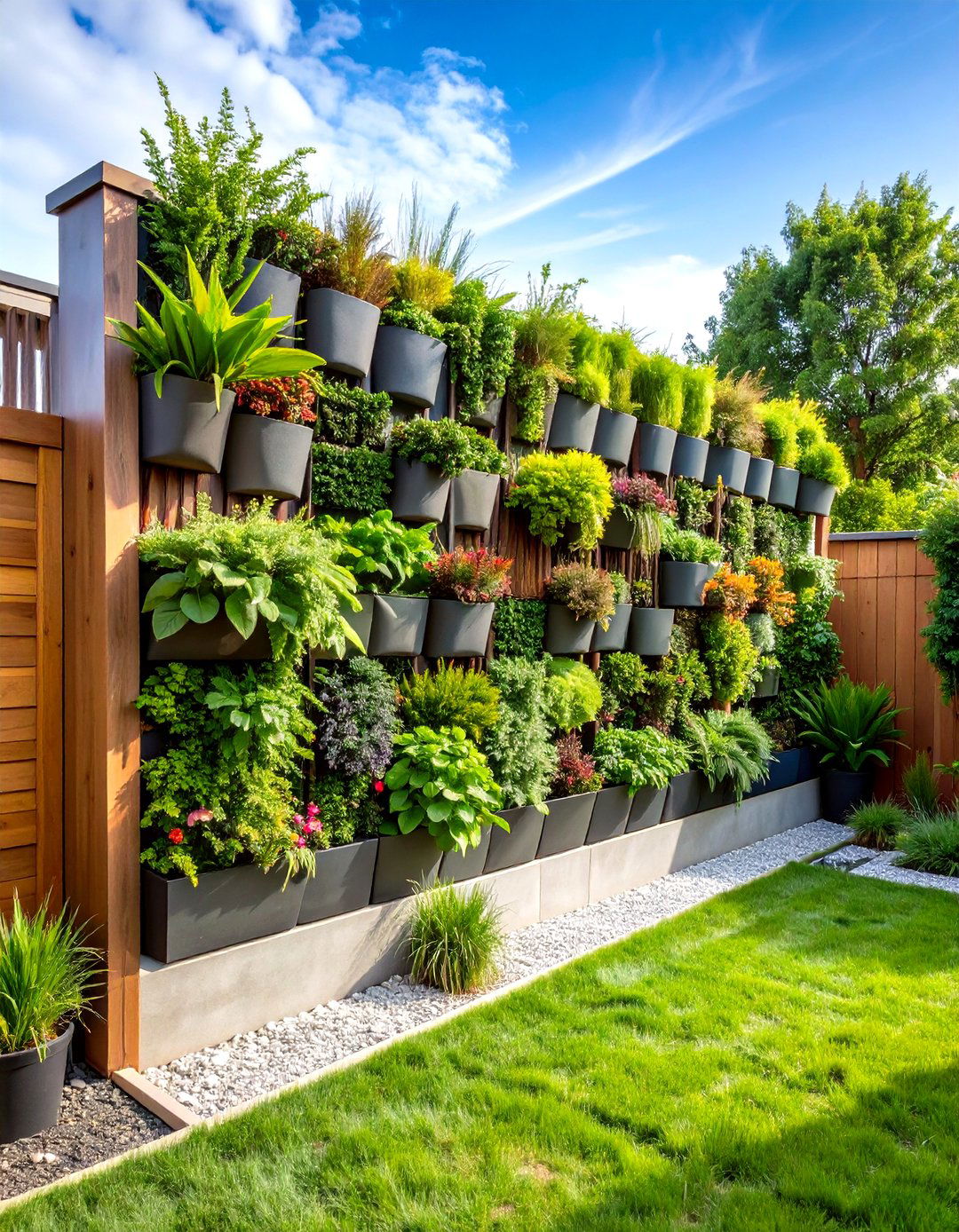
A lush “living wall” doubles as an outdoor privacy screen and a natural air-filter. Modular pocket systems or DIY wooden frames allow you to tuck herbs, ferns, or succulents into felt pouches; regular watering and occasional fertilizing keep the wall vibrant. Dense planting blocks lines of sight while the greenery cools the air around patios and balconies. Start small — four stacked rows are usually enough for seated privacy — then expand upward as plants mature. Guides from gardeners’ blogs show how to mount the structure securely and choose shade- or sun-loving species for your microclimate.
2. Bamboo Fence Outdoor Privacy Screen
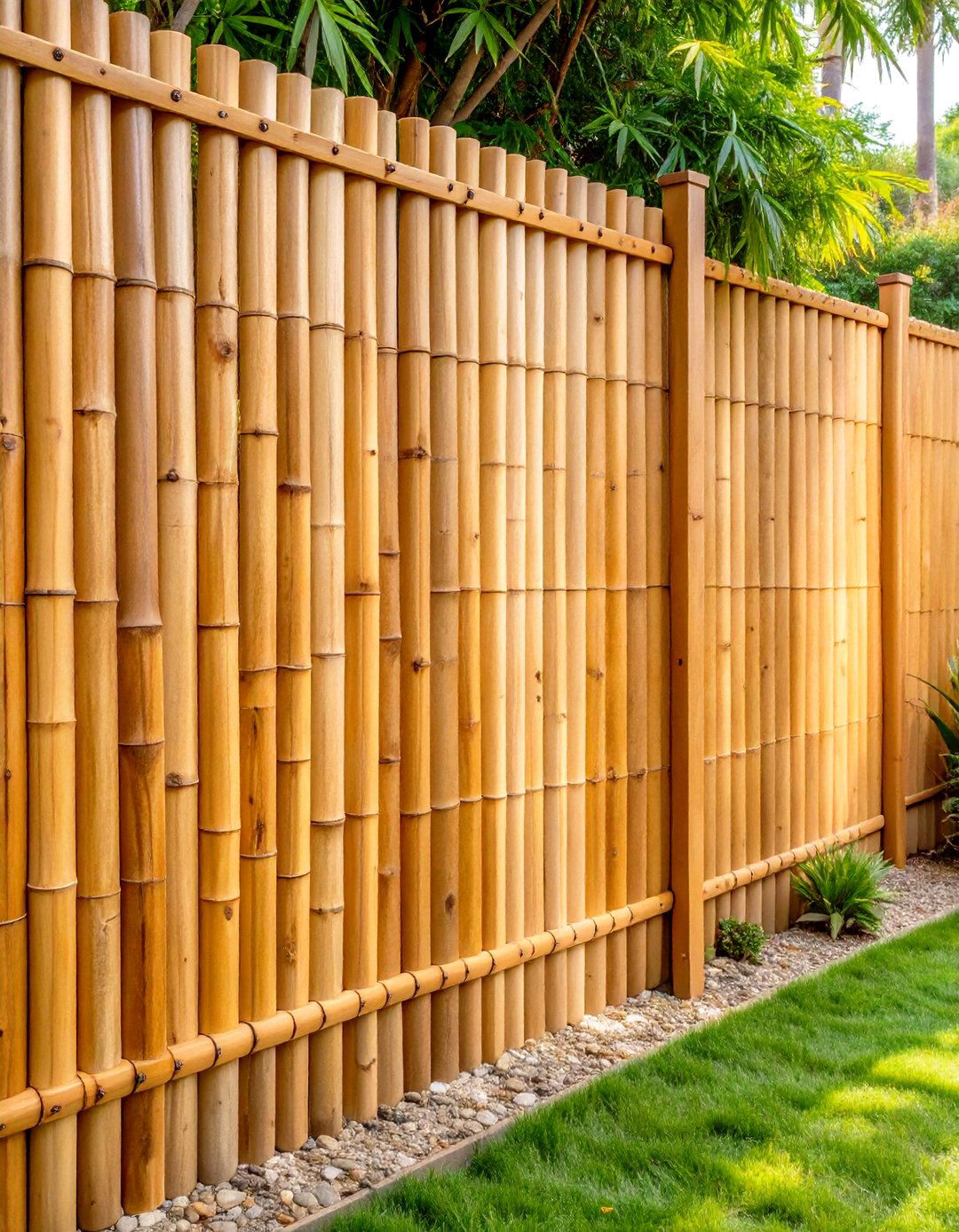
A, bamboo fence offers instant height, organic texture, and rustling white-noise in the breeze. Full-round poles tied to a cedar or metal frame form an eight-foot wall almost overnight, and because bamboo is lightweight, installation rarely needs deep footings. Look for sustainably harvested, pre-rolled panels to zip-tie onto existing chain-link or rail fences, or plant clumping bamboo in trough planters for a living version that grows fast but stays in bounds. Seal poles yearly to prevent weather-checking and enjoy a tropical vibe that costs less than most hardwood fencing.
3. Horizontal Slatted Wood Privacy Screen
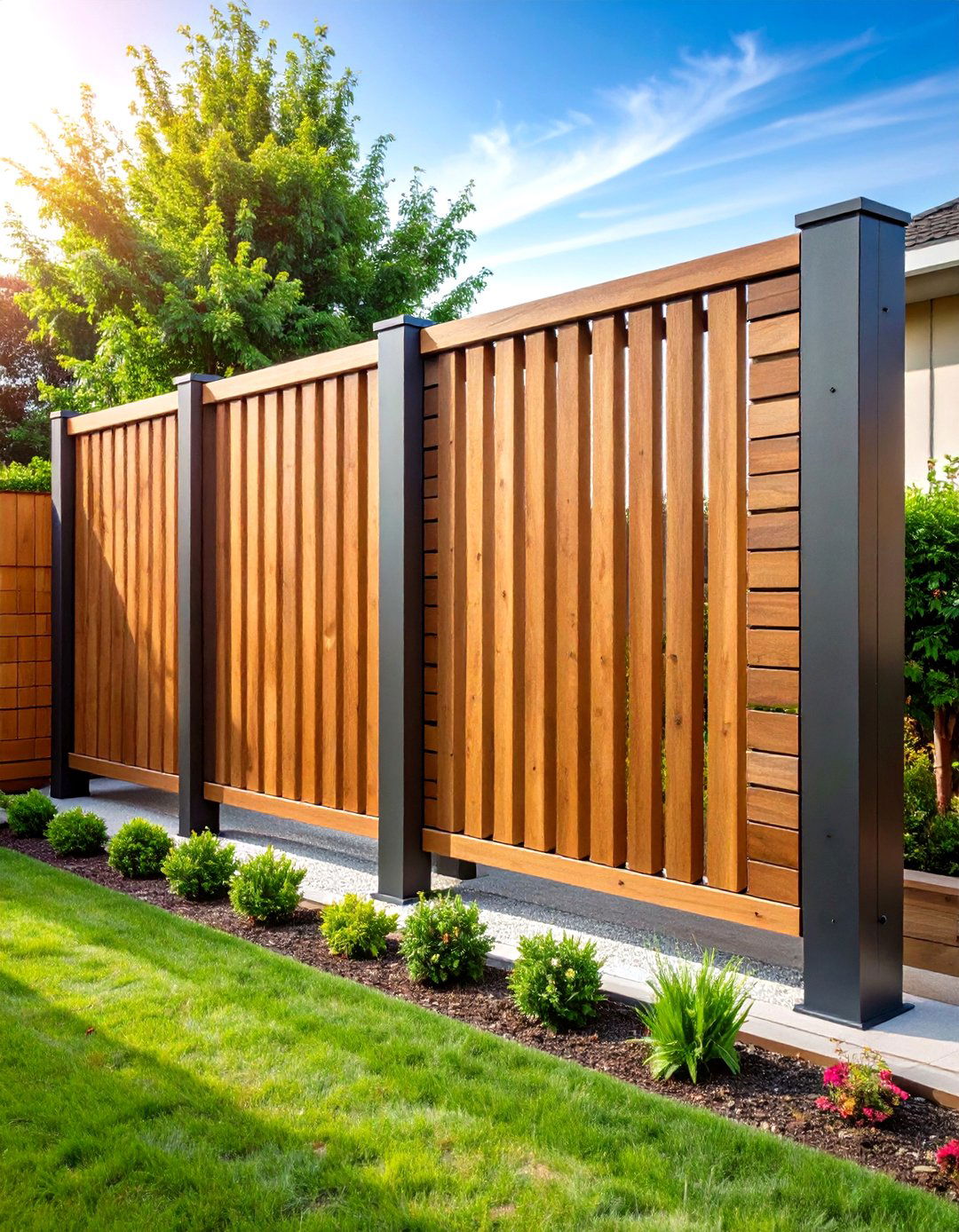
Unlike vertical pickets, horizontal cedar or redwood slats create eye-level privacy without feeling boxed in. Spacing boards ½ – ¾ inch apart lets breezes pass while still blocking direct views; staining in earthy tones helps the screen recede behind furniture. Mount boards to steel posts for a crisp contemporary look, or extend the pattern only behind a seating nook to frame a focal area. Because boards sit on edge, cheaper off-cuts often work — just apply weather-resistant sealant every two years. Horizontal lines visually widen small yards, making them feel more expansive.
4. Laser-Cut Metal Panel Privacy Screen
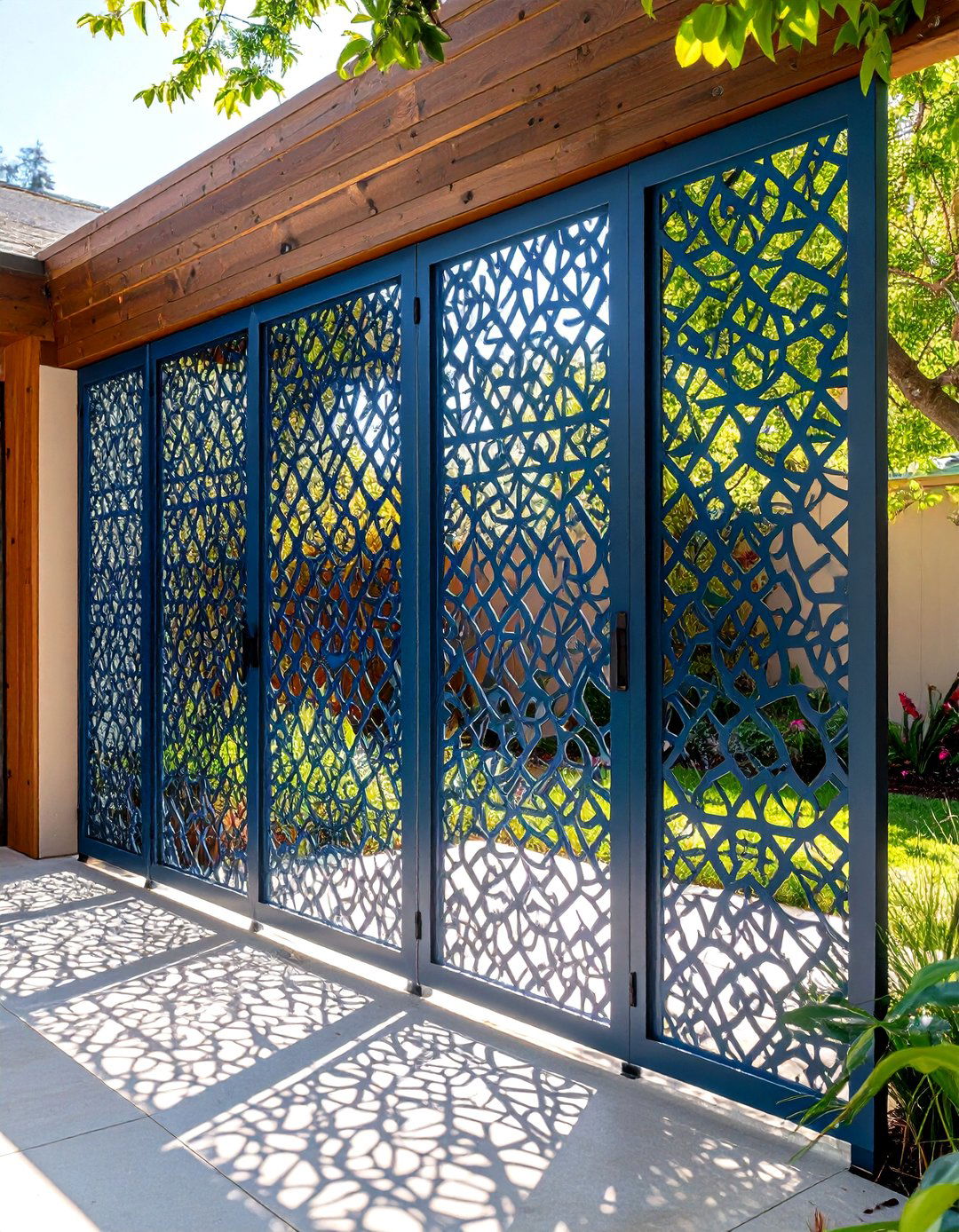
Decorative laser-cut steel or aluminum panels turn privacy into artwork. Patterns — from geometric Moorish motifs to leafy silhouettes — cast ever-changing shadows across patios as the sun moves. Powder-coated finishes resist rust, and many brands include mounting brackets so panels can be freestanding or fixed between posts. Combine two or three designs for a gallery-wall vibe, or back-light with string LEDs for evening drama. Planters at the base soften the metal’s edges and help anchor panels against wind.
5. Trellis and Climbing-Vine Privacy Screen
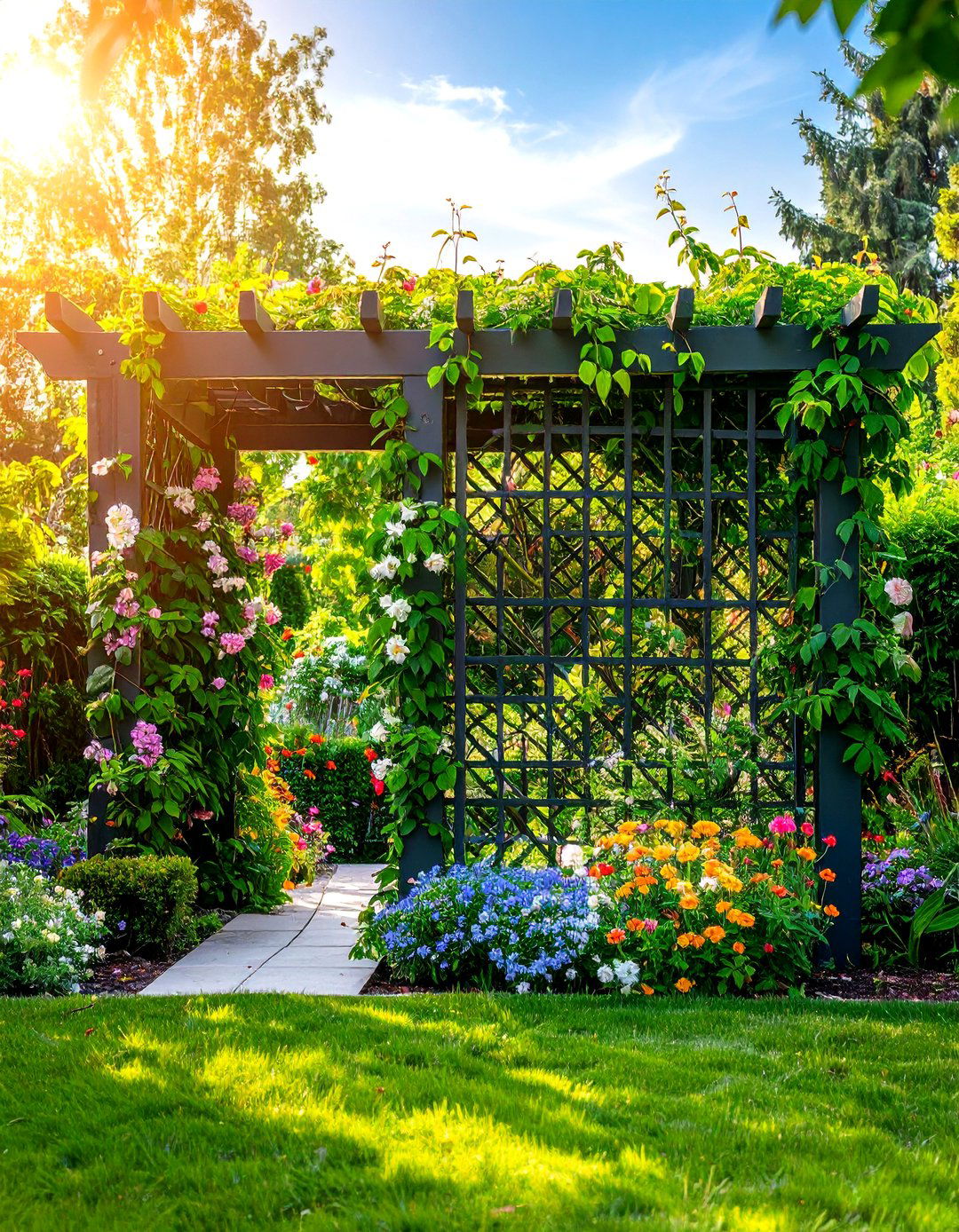
Consider a classic trellis draped in clematis, jasmine, or trumpet vine for a fragrant screen that grows thicker each season. Install a cedar or metal lattice two feet from your main fence to create a “green corridor” that deadens noise. Choose evergreen climbers in mild climates, or train fast annuals like morning glory for quick cover each summer. Regular pruning keeps growth lush instead of leggy, and drip irrigation simplifies watering. Many gardeners combine a trellis topper with lower solid fencing for full-height seclusion.
6. Outdoor Curtain Privacy Screen
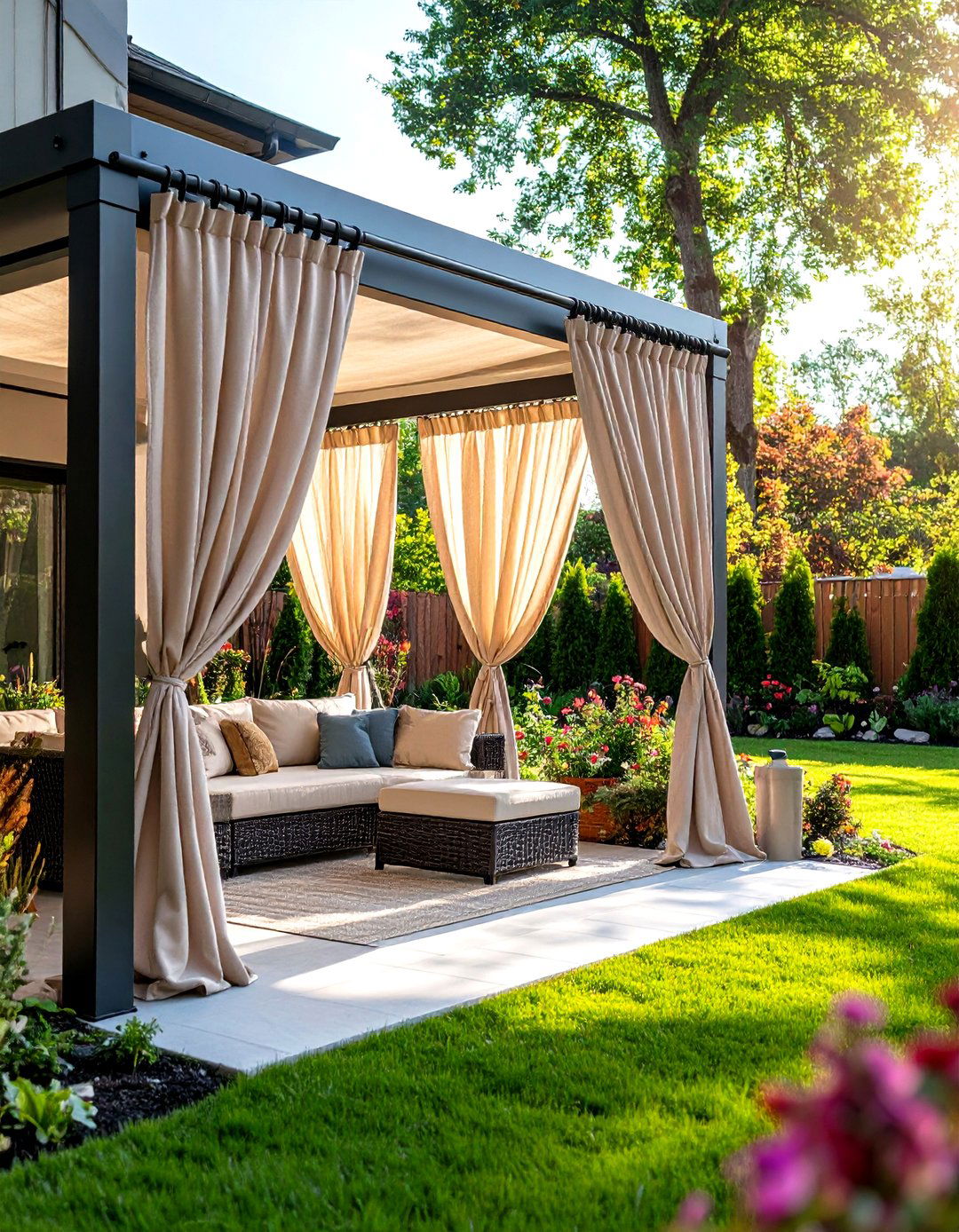
Surprisingly breezy, outdoor curtains mounted on stainless-steel rods or wire cables can be drawn closed only when you need solitude. Waterproof blackout panels block glare, while sheer linen-look fabrics soften views without darkening the space. Add tiebacks to secure curtains on windy days and slip curtain weights into bottom hems for tidy drape. For renters, tension rods between pergola posts create a no-drill solution that comes down at lease end. Machine-washable fabrics make upkeep easy.
7. Tall Planter Barricade Privacy Screen
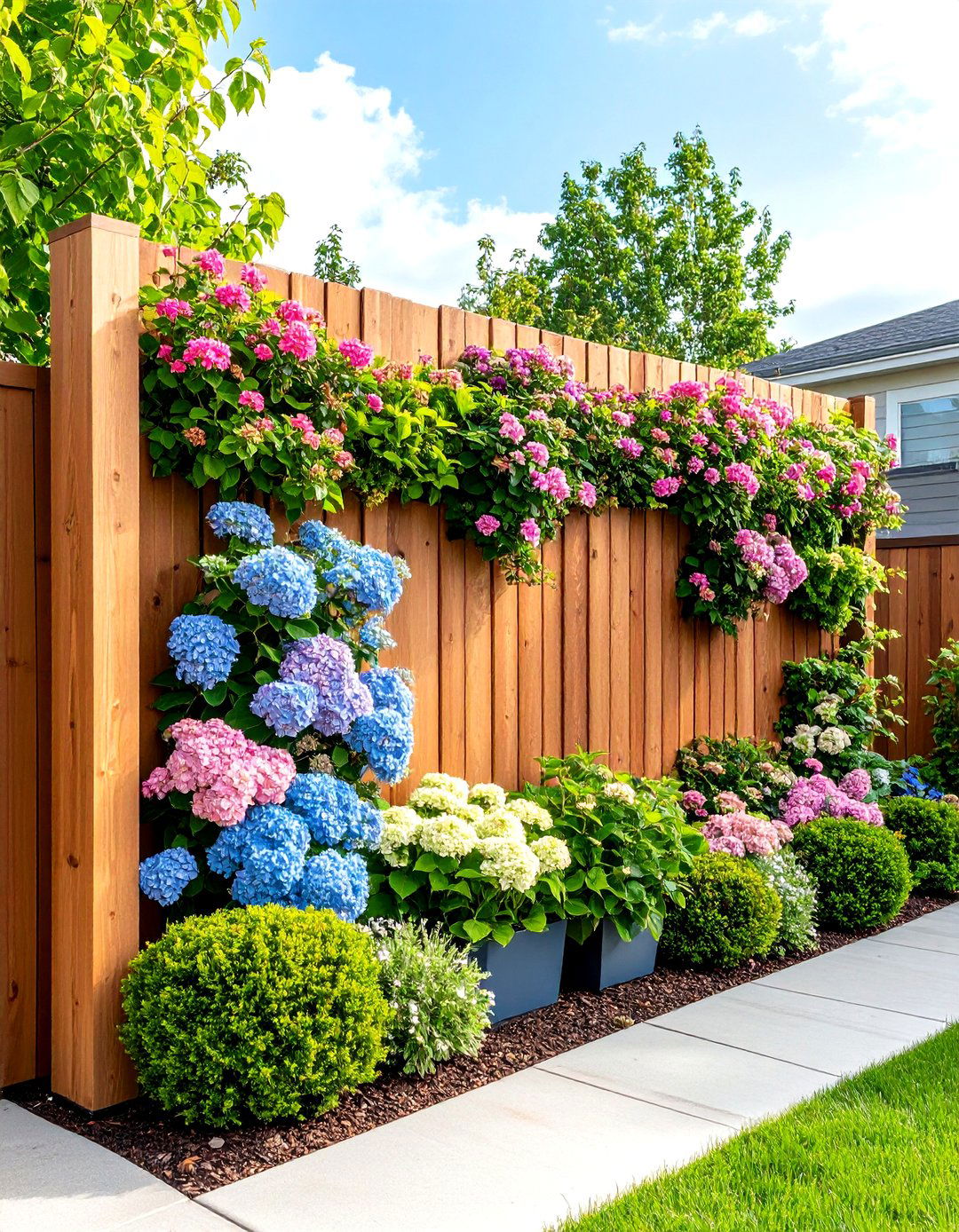
With, oversized planters (24"+ tall) you can sculpt movable walls of hydrangeas, dwarf evergreens, or ornamental millet. Arrange three rectangular tubs in a zig-zag for stability, leaving hidden gaps for drainage and hose access. Self-watering reservoir inserts reduce maintenance, and caster wheels let you re-position the screen before outdoor parties. Choosing planters in a cohesive color palette unifies the look; mixing heights creates a tiered, layered effect that feels like a mini urban jungle.
8. Shade-Sail Wall Privacy Screen
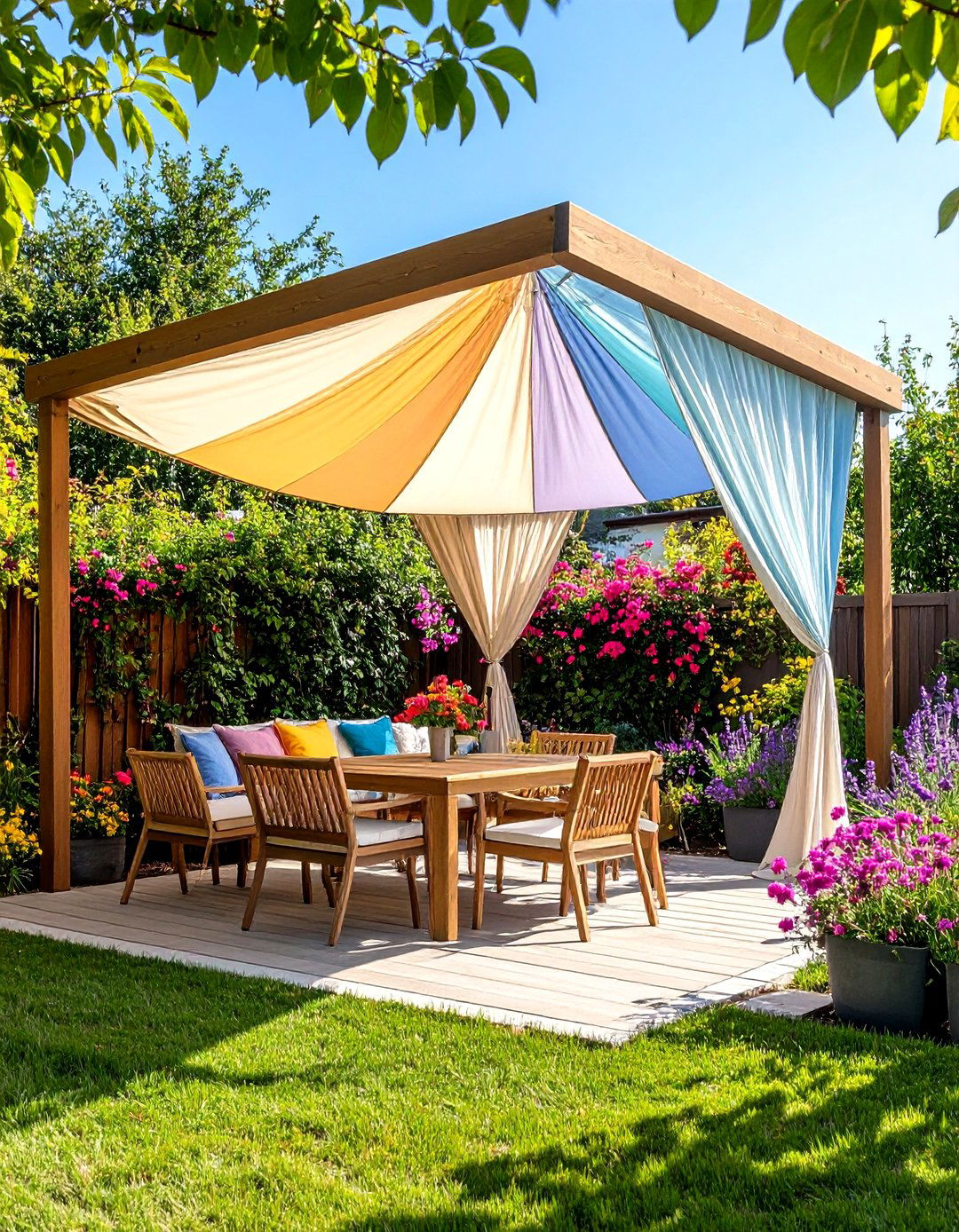
For sun-drenched decks, tensioned shade sails can be hung vertically or at a steep angle to block high windows next door. Triangular or rectangular fabric attached to wall plates and sturdy posts forms an airy canvas that stops both glare and prying eyes. UV-stabilized HDPE mesh allows heat to escape, while waterproof sails give rain shelter too. Adjust anchor height to fine-tune coverage, and choose earthy hues that blend with roofing or garden tones. DIYers appreciate that sails pack away in winter, extending fabric life.
9. Gabion Stone-Wall Privacy Screen
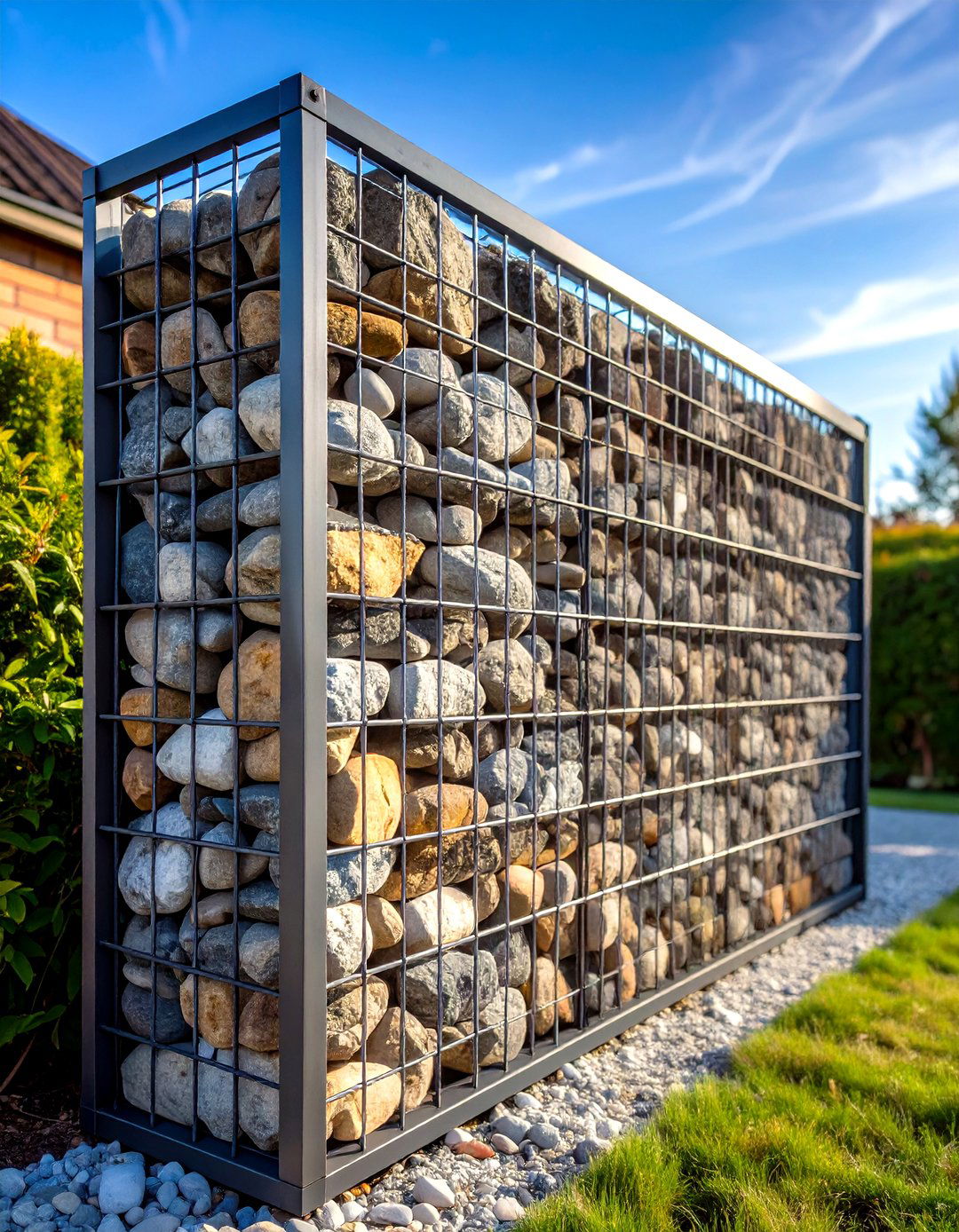
Take structural style up a notch with gabion baskets — galvanized wire cages filled with river rock, recycled brick, or even firewood logs. The hefty mass muffles traffic noise and stands up to high-wind zones better than wooden fences. Stack cages two high for patio screening, or top with a cedar cap to double as bar seating. Because fill stones drain freely, gabions rarely suffer frost heave. Their rugged texture pairs beautifully with sleek outdoor furniture for a modern-meets-natural aesthetic.
10. Corrugated Metal Fence Privacy Screen

Despite industrial roots, corrugated metal panels deliver chic privacy when framed in stained timber. The ribbed surface diffuses sound and reflects morning light, brightening narrow alleys. Select factory-painted or Corten panels to avoid rust stains; secure to metal posts with self-tapping screws. In humid climates, include a 2-inch ground clearance for airflow. Pair the screen with warm string lights and potted evergreens to soften its metallic shine and create a cozy courtyard vibe.
11. Louvered Aluminum Panel Privacy Screen
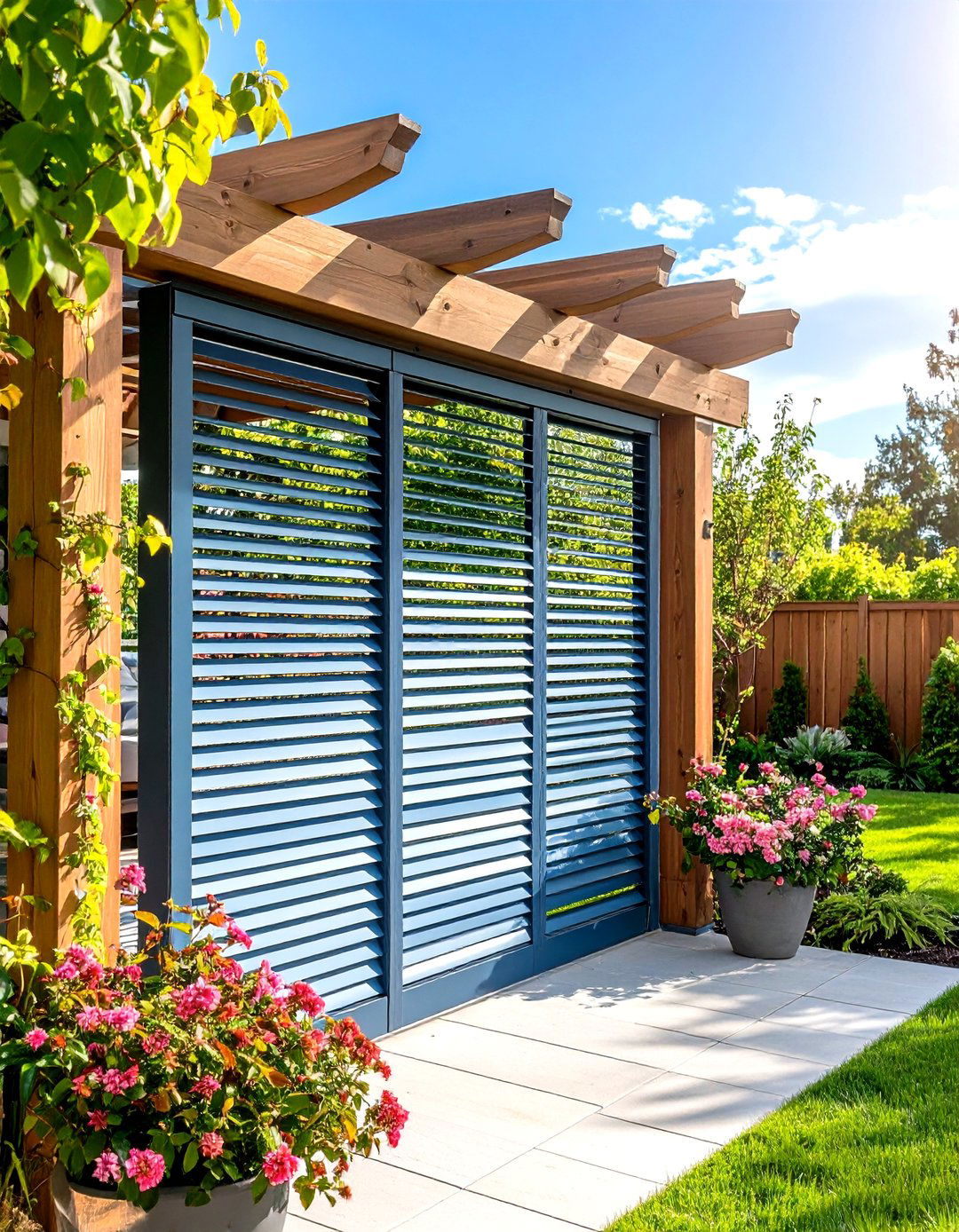
Adjustable louver screens let you tilt blades to admit breezes while blocking direct sightlines — handy for balconies exposed to shifting sun angles. Powder-coated aluminum resists corrosion and requires only occasional soap-and-water cleaning. Some systems integrate into pergolas with motorized controls, so you can close louvers for rain or open them to stargaze. Anchor posts securely; louvers act like sails in storms. Because panels arrive pre-finished, install time is typically an afternoon project.
12. Folding Privacy Screen Panels
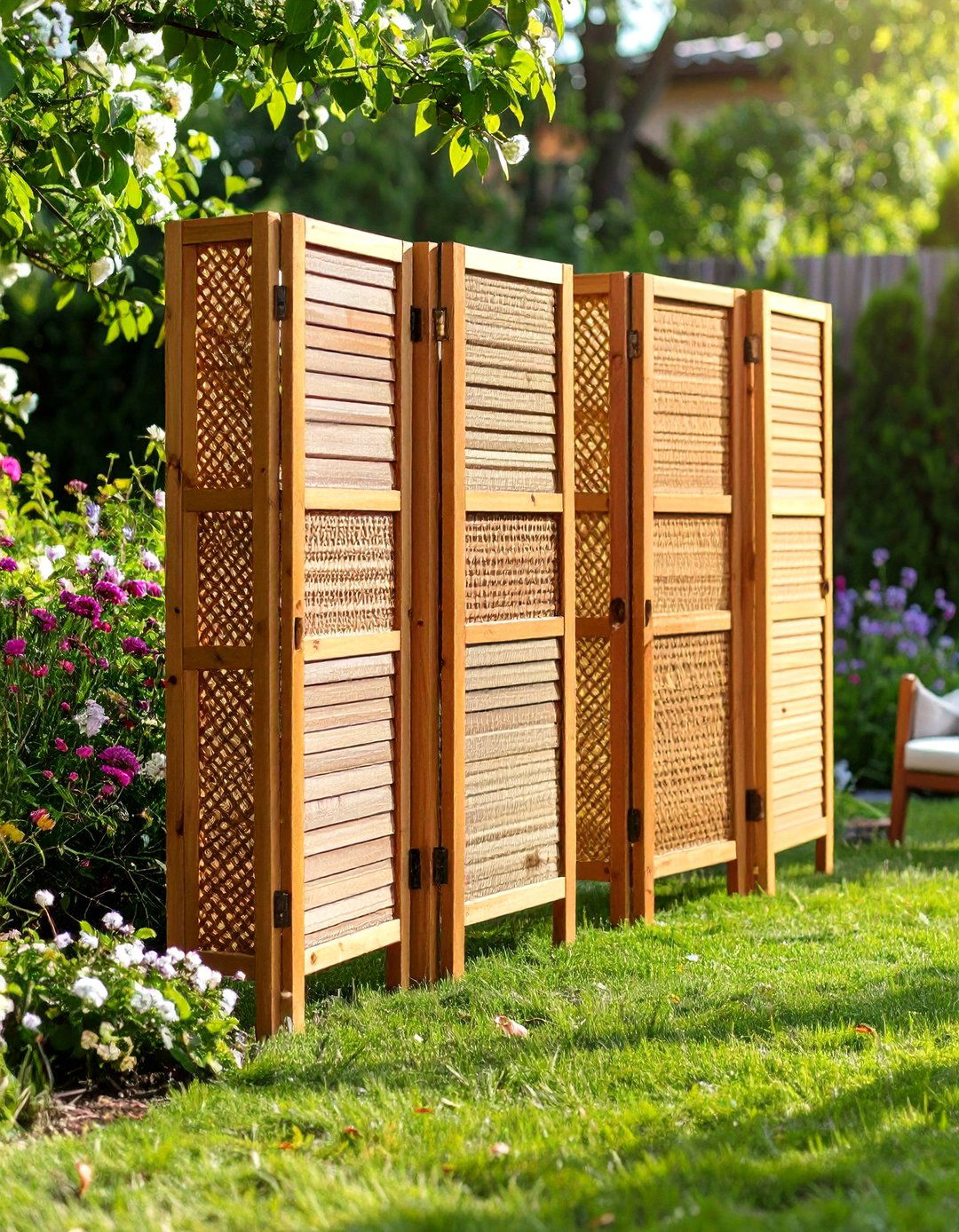
Portable accordion screens — often in weather-resistant acacia or synthetic rattan — create pop-up privacy wherever chairs land. Hinged joints fold flat for winter storage, and foot stakes slide into lawn or planter boxes for stability. Use one behind a chaise to hide pool equipment, or join several to outline an outdoor dining zone. Spray-seal wood every few seasons to prolong life. These screens excel in rentals because they require no digging or drilling.
13. Container Hedge Privacy Screen
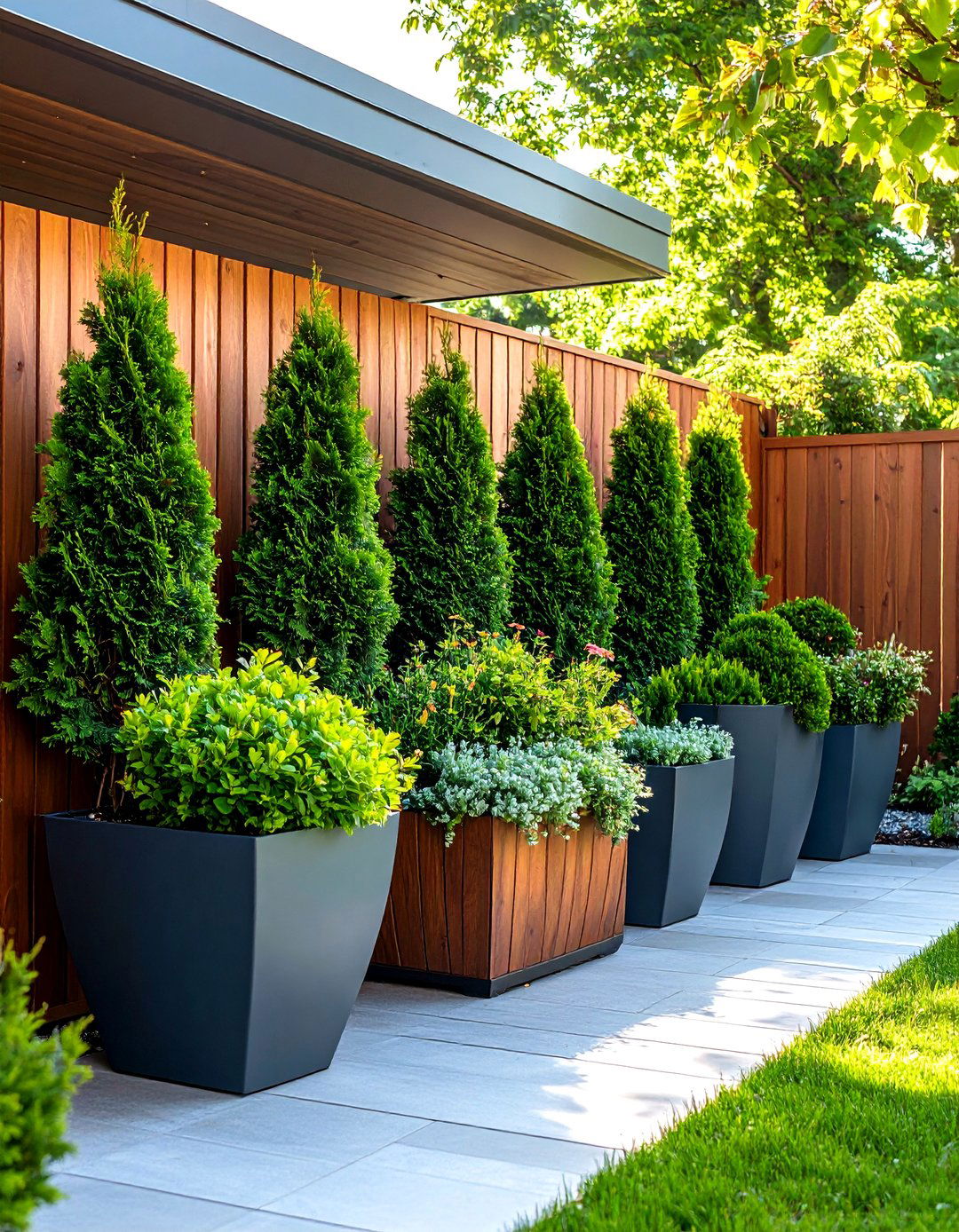
Bringing hedges onto patios is as simple as lining up large trough planters and inserting evergreen laurels, yews, or arborvitae. West-coast designers recommend breathable pots at least 18 inches deep so roots stay cool and watered. Fast-growing varieties reach shoulder height in a single season, and trimming keeps them boxy or sculptural. On apartment terraces, dwarf conifers offer year-round cover without overwhelming the square footage.
14. Ornamental Grass Privacy Screen
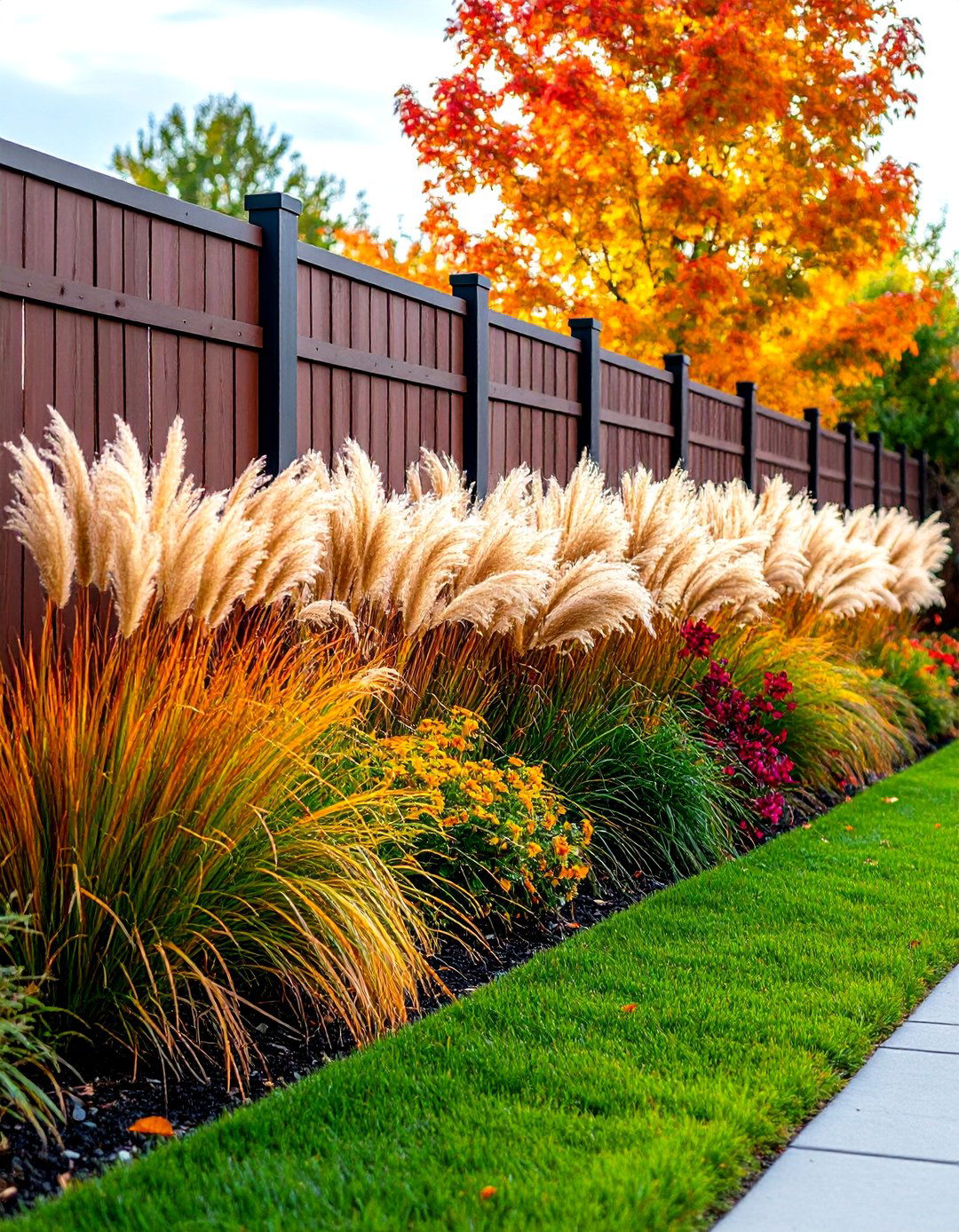
Certainly, swaying plumes of pampas, switchgrass, or feather-reed grass form a soft, motion-filled screen that turns golden in autumn. Plant clumps three feet apart along fence lines or in raised beds; within two seasons, foliage will knit together into a dense barrier six to ten feet tall. Grasses tolerate wind, drought, and salty coastal air better than many shrubs, and winter seed heads add texture after leaves fall. Cut back in late winter to refresh growth.
15. Potted Bamboo Cluster Privacy Screen
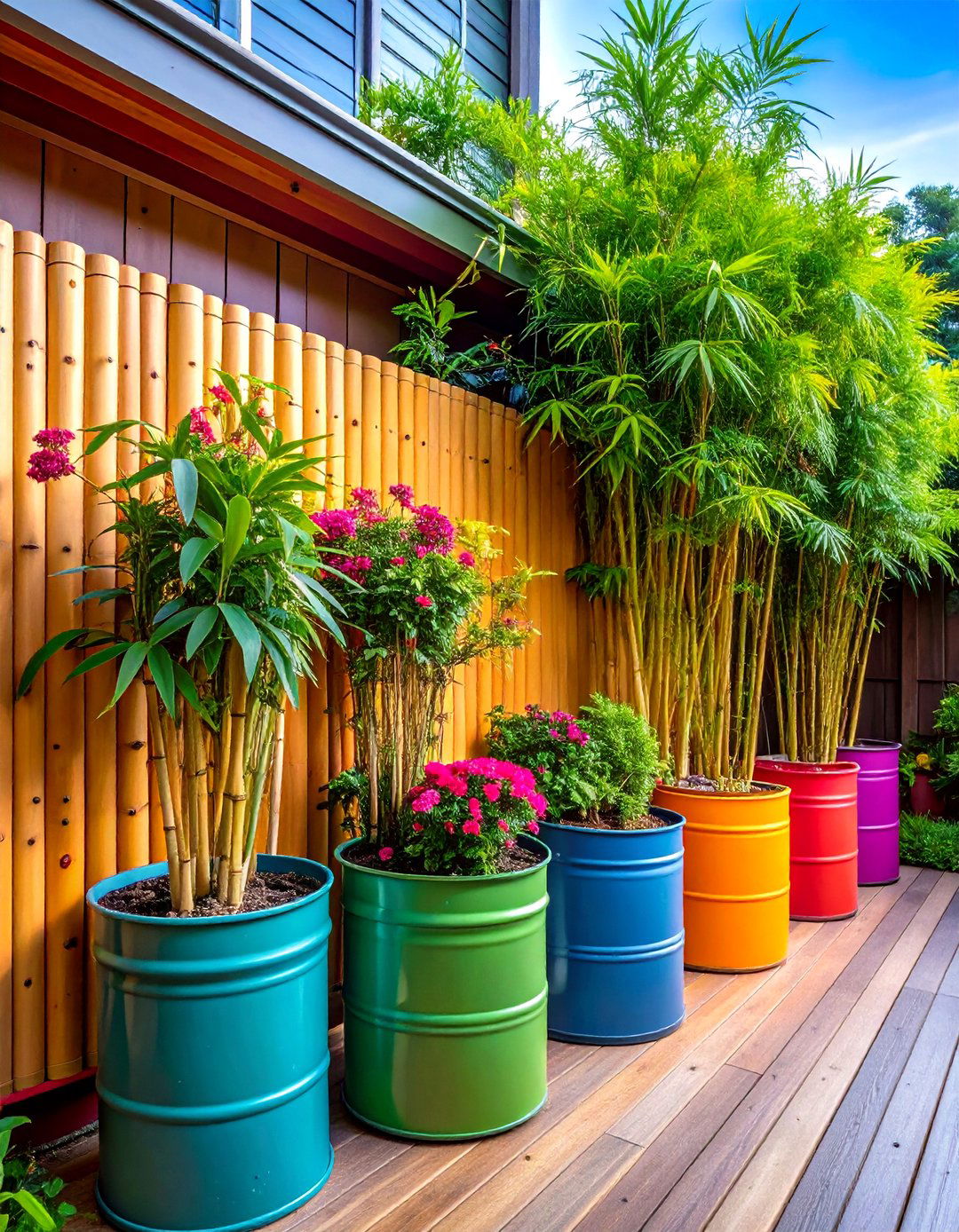
Looking to mask a neighbor’s second-story deck? Hardy clumping bamboo grown in galvanized stock tanks rockets skyward yet stays contained. Choose non-invasive species like Fargesia; they tolerate pots and cold snaps. Frequent watering and monthly fertilizing keep canes lush. Add locking casters to the tanks for mobility during storms or parties. The feathery canes also diffuse wind, making patios calmer.
16. Recycled Shutter Privacy Screen
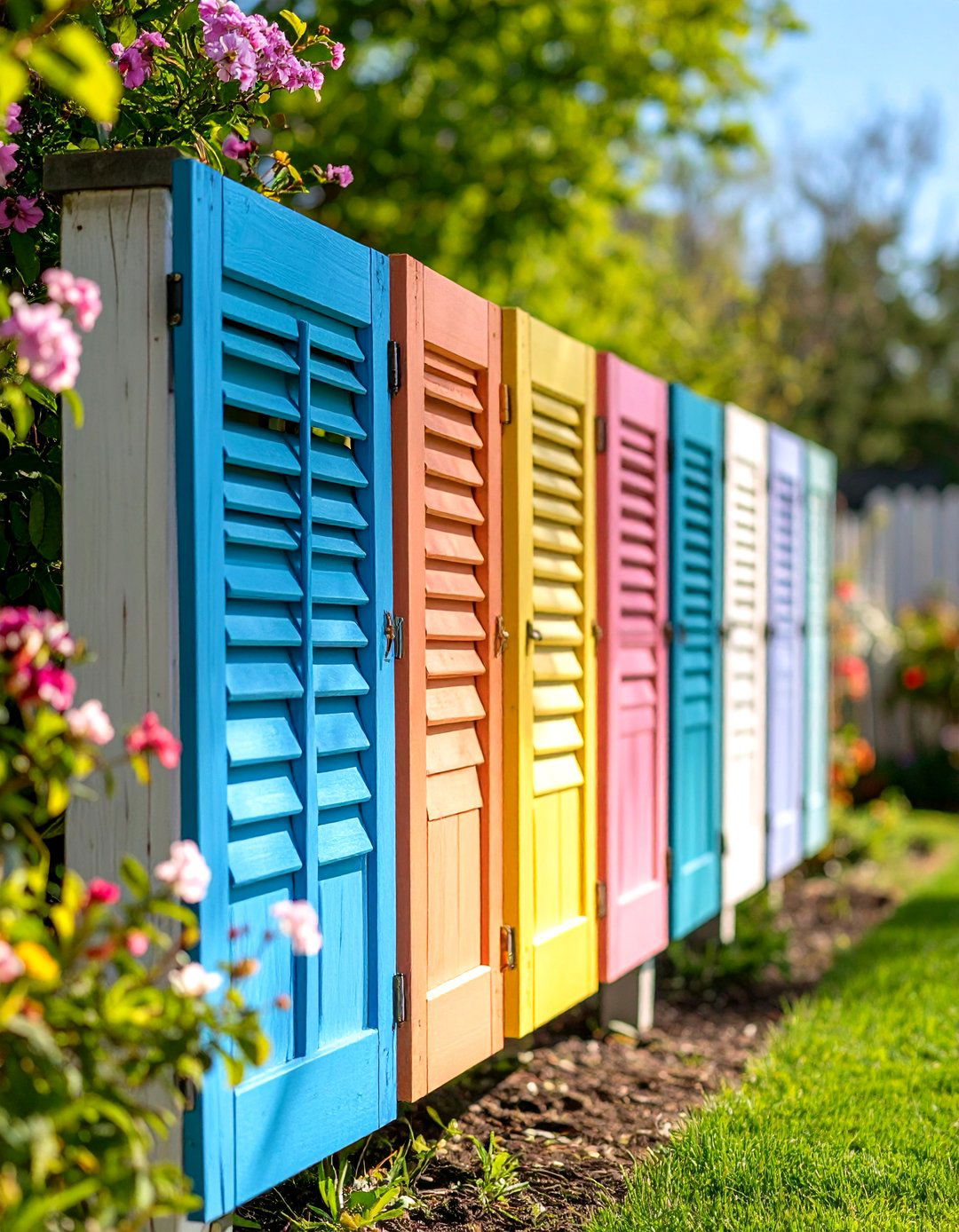
Old louvered shutters, salvaged from renovation yards, screw together into a shabby-chic screen that costs next to nothing. Alternate heights for a picket-fence rhythm, then whitewash or brightly paint for cottage charm. Because louvers tip downward, rain sheds off while still letting breezes through. Anchor each shutter to a simple 2×4 frame for stability and add planter boxes at the base for extra weight.
17. Pallet Privacy Wall Screen
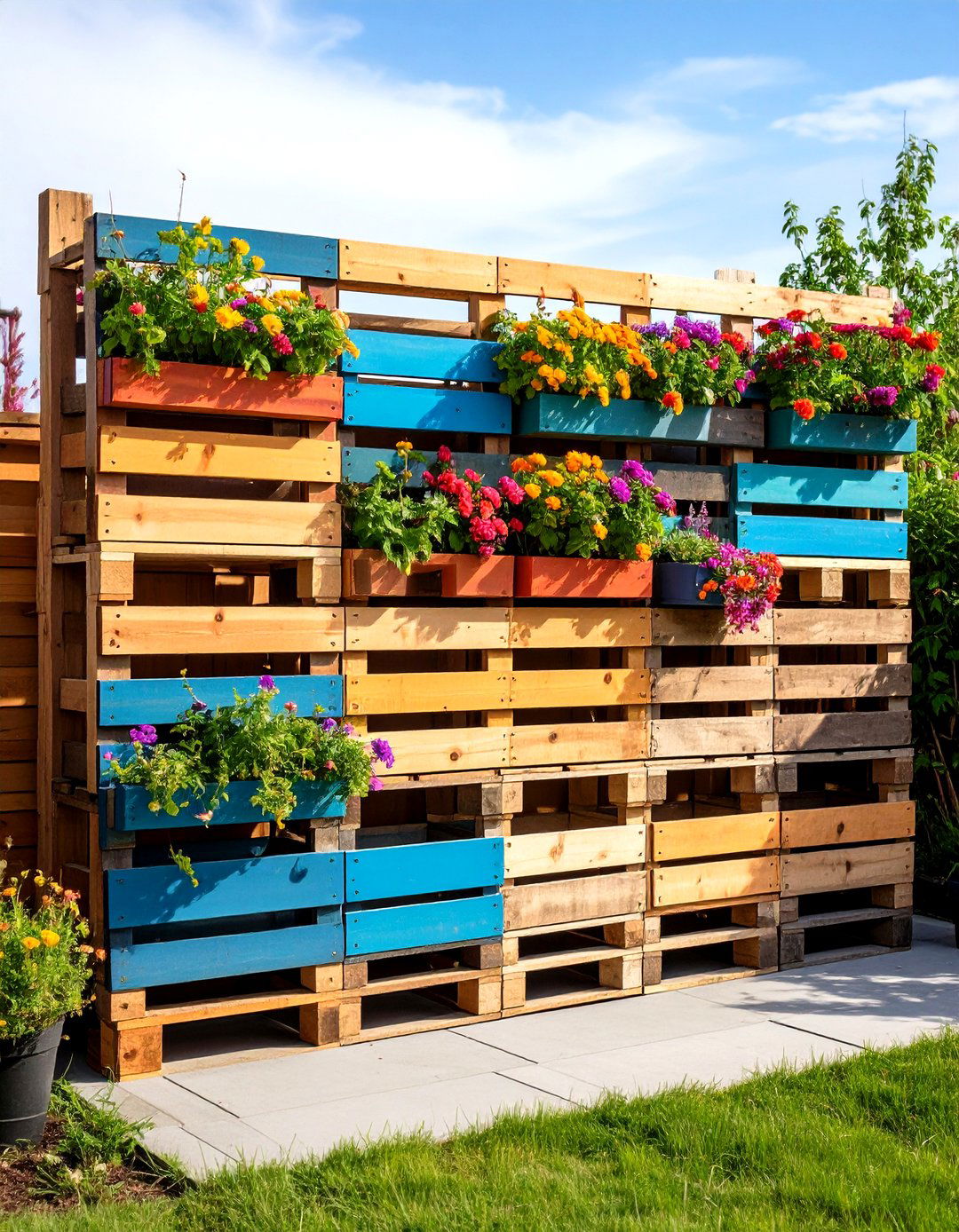
What starts as free pallets can become a rustic outdoor privacy screen after a weekend of sanding and staining. Remove center boards to stagger gaps, or keep boards tight for full coverage. The Spruce highlights using mismatched pallets for boho flair; topping the wall with pergola beams lets you hang lanterns or vines. Seal wood against moisture, and secure posts in concrete for longevity.
18. Pergola with Drop-Down Blinds Privacy Screen
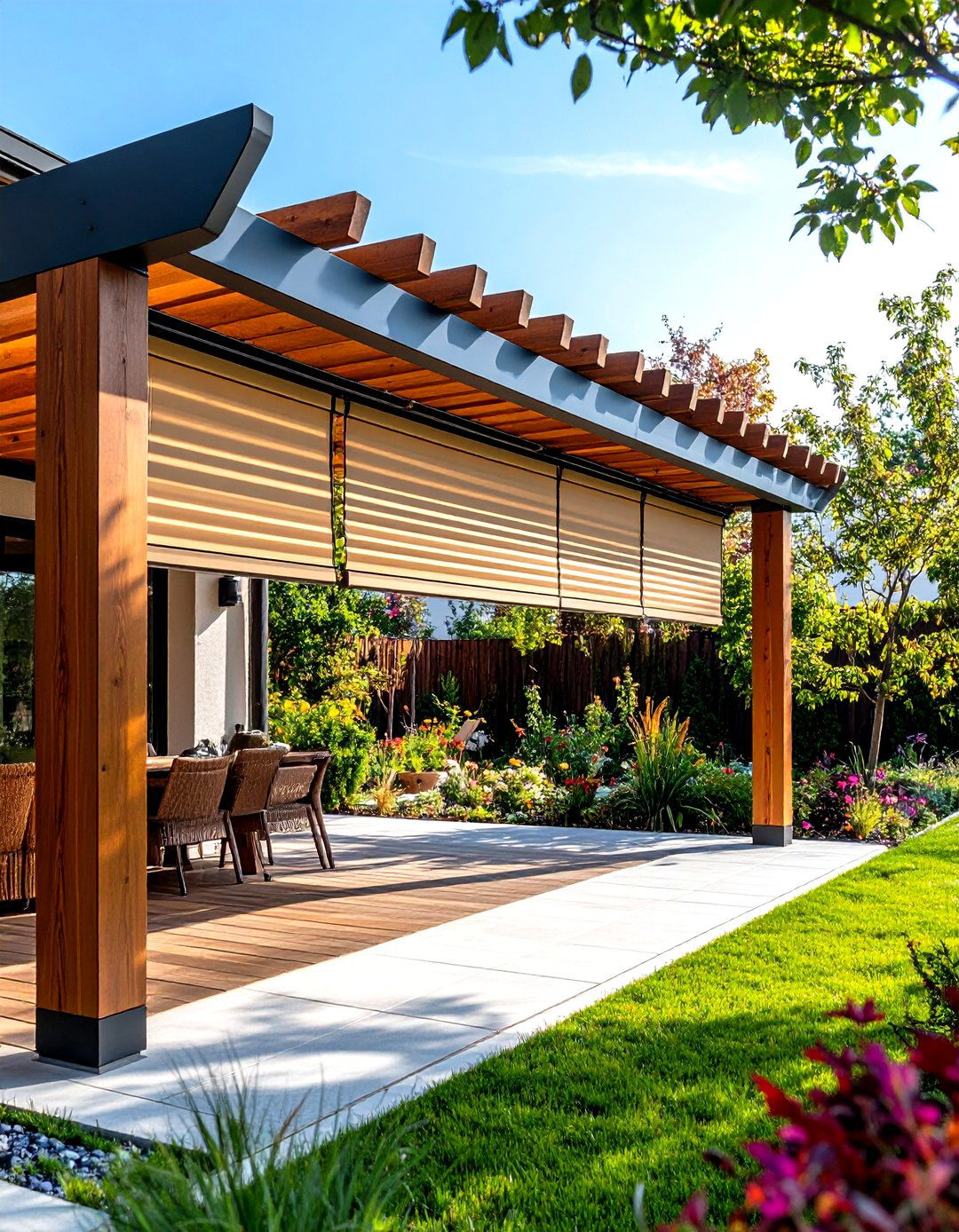
By adding retractable blinds to the sides of a pergola, you control sunlight and seclusion with one tug. Weatherproof polyester or PVC blinds roll into discreet cassettes when not needed, maintaining open sightlines. Combine with overhead louver roofs for all-weather versatility. Blinds can be motorized and tied into smart-home hubs, letting you schedule them for sunrise or windy-day retraction.
19. Water-Wall Fountain Privacy Screen
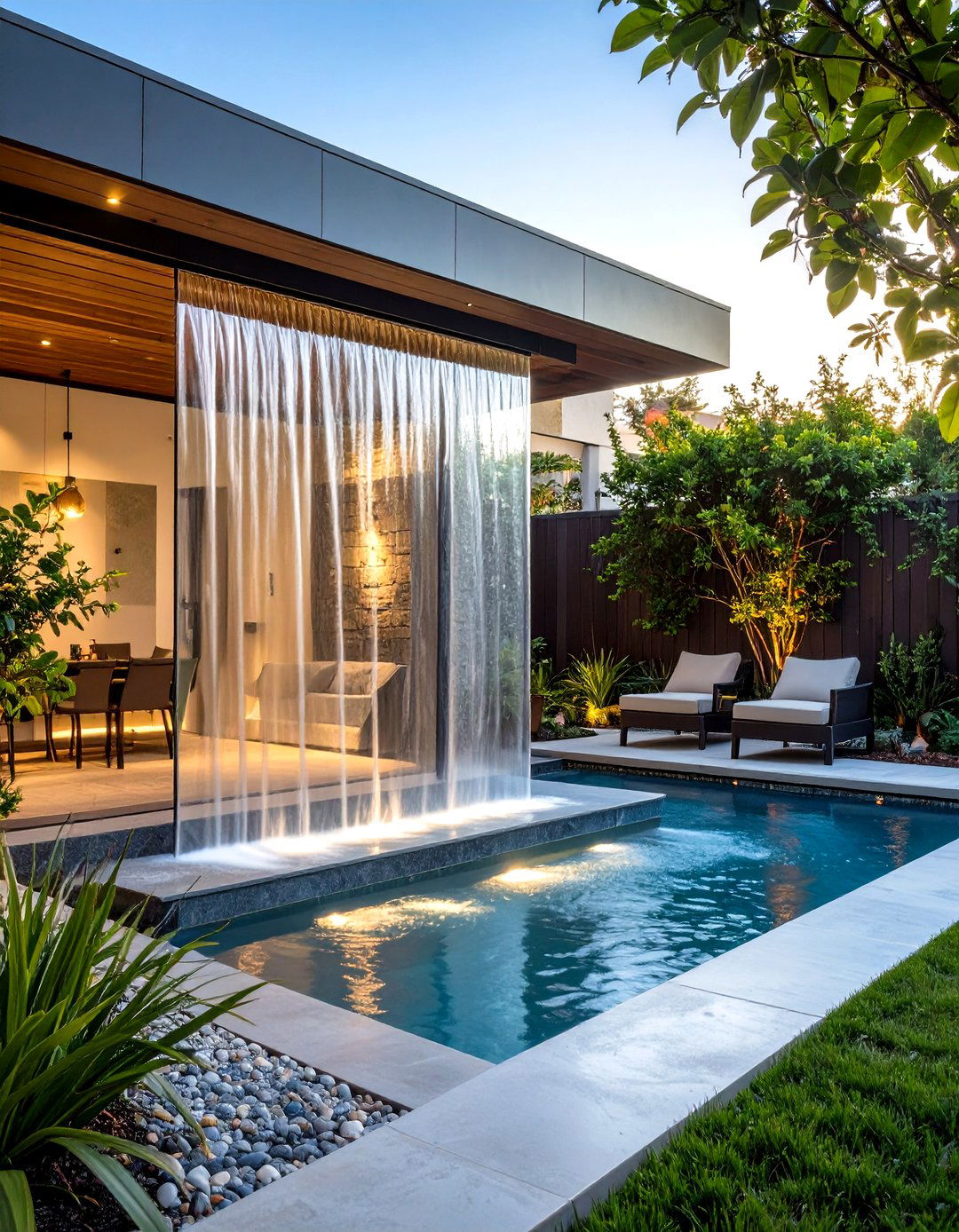
The soothing splash of a narrow sheet-flow fountain doubles as white-noise masking while its glass or stone backdrop blocks views. Prefab kits pump recirculating water up behind tempered glass, creating a shimmering veil that mesmerizes guests. Position LED strips in the basin for nighttime glow, and add aquatic plants around the base for a pond-feel without standing water. Ensure electrical GFCI outlets are used for safety.
20. String-Light Trellis Privacy Screen
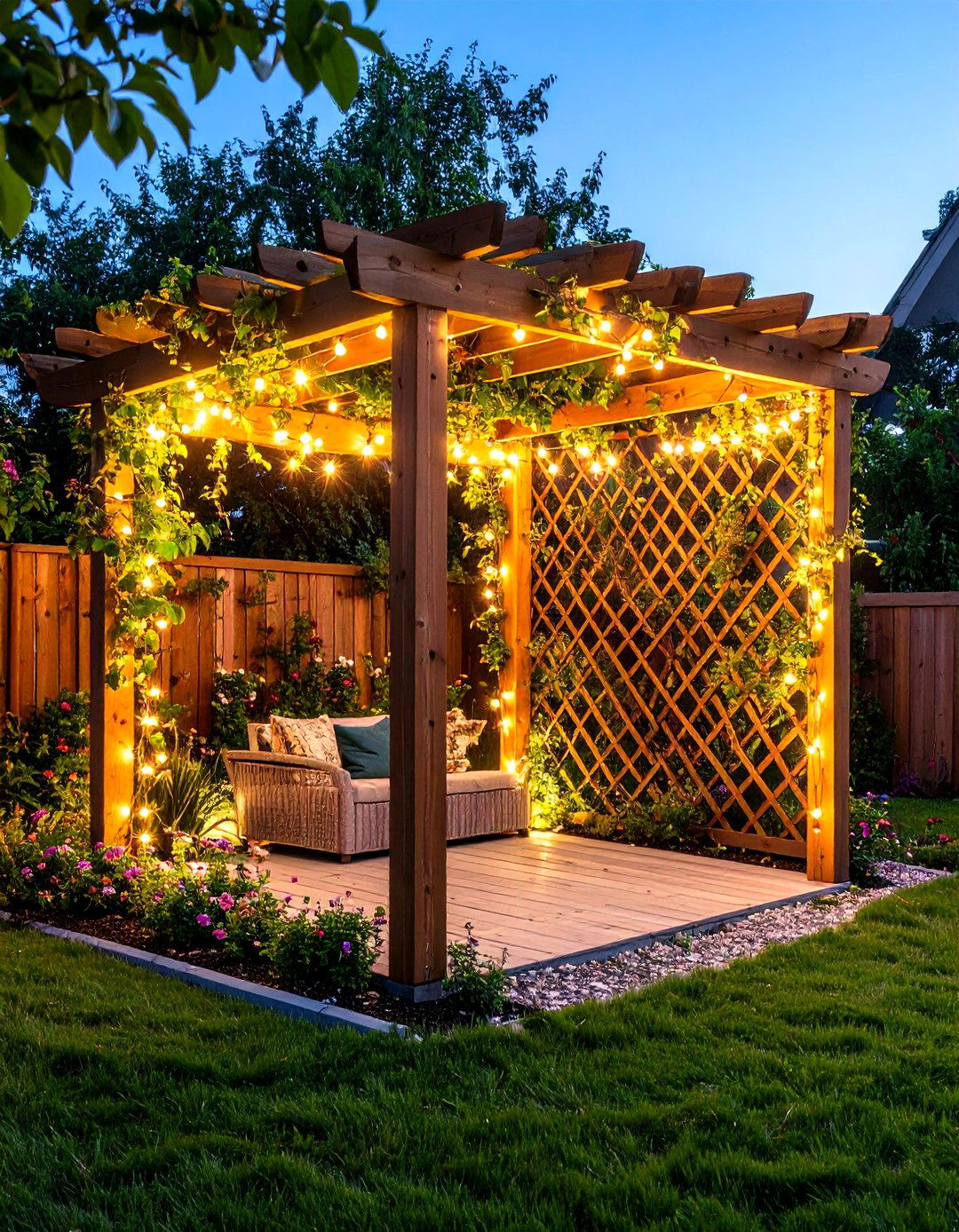
String-light walls weave Edison bulbs between wood battens or wire grids, giving evening privacy through glare control rather than solid mass. City Farmhouse’s DIY shows how warm bulbs strung on pallet fences make neighbors’ windows disappear after dusk. Combine micro-LED curtain lights with climbing annuals for daytime greenery and nighttime sparkle. Weatherproof sockets and a smart plug keep energy use low and scheduling easy.
21. Macramé or Fabric Hanging Privacy Screen
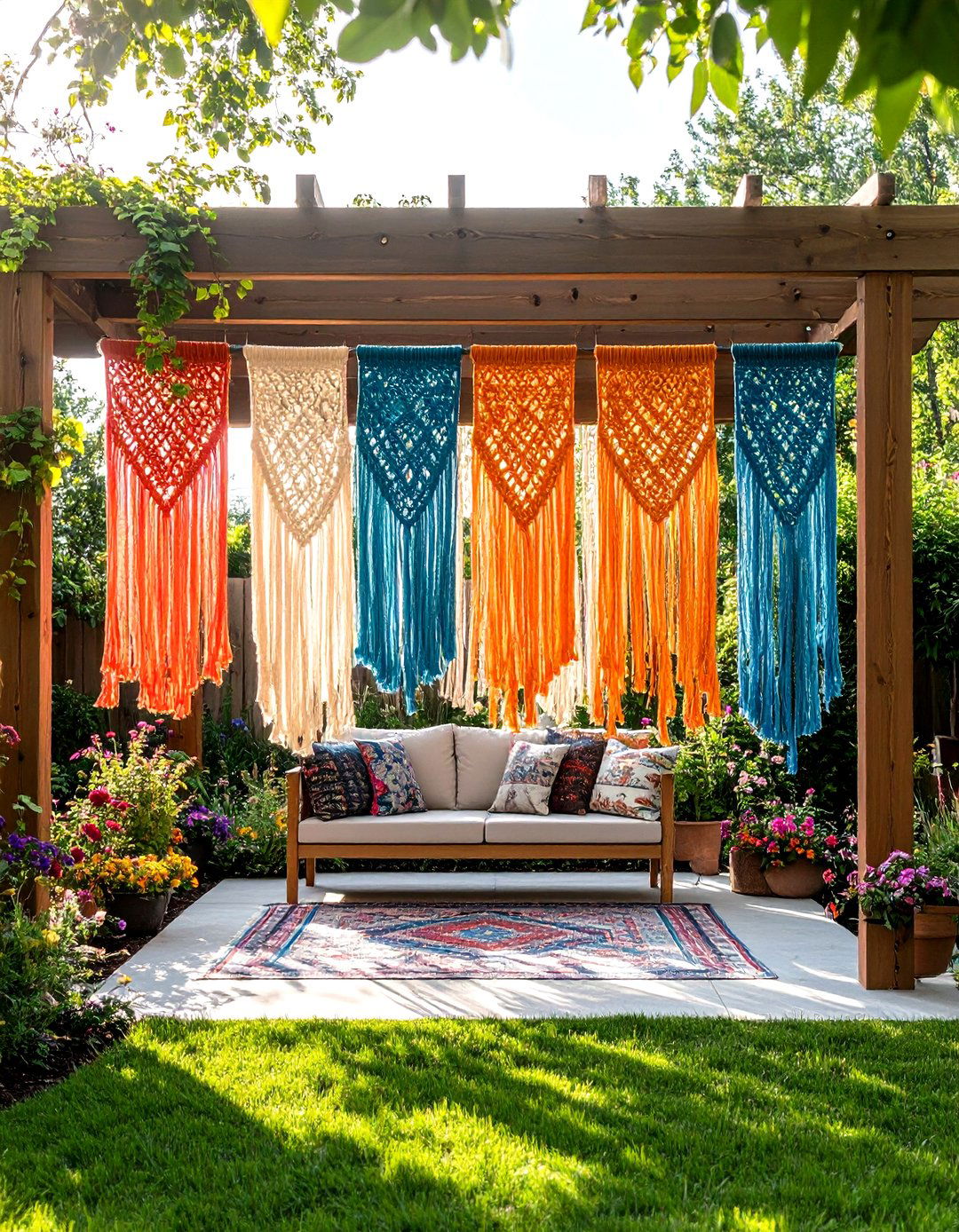
Surprisingly durable nylon macramé panels lend boho flair while softly obscuring sightlines. Hang oversized knotted tapestries from pergola beams or between courtyard columns; the open weave lets light dance through for cozy ambiance. Outdoor-rated cords resist mildew, and panels roll up for storage. DIYers on crafting forums share patterns using simple square knots that beginners master quickly.
22. Mirror Wall Reflective Privacy Screen
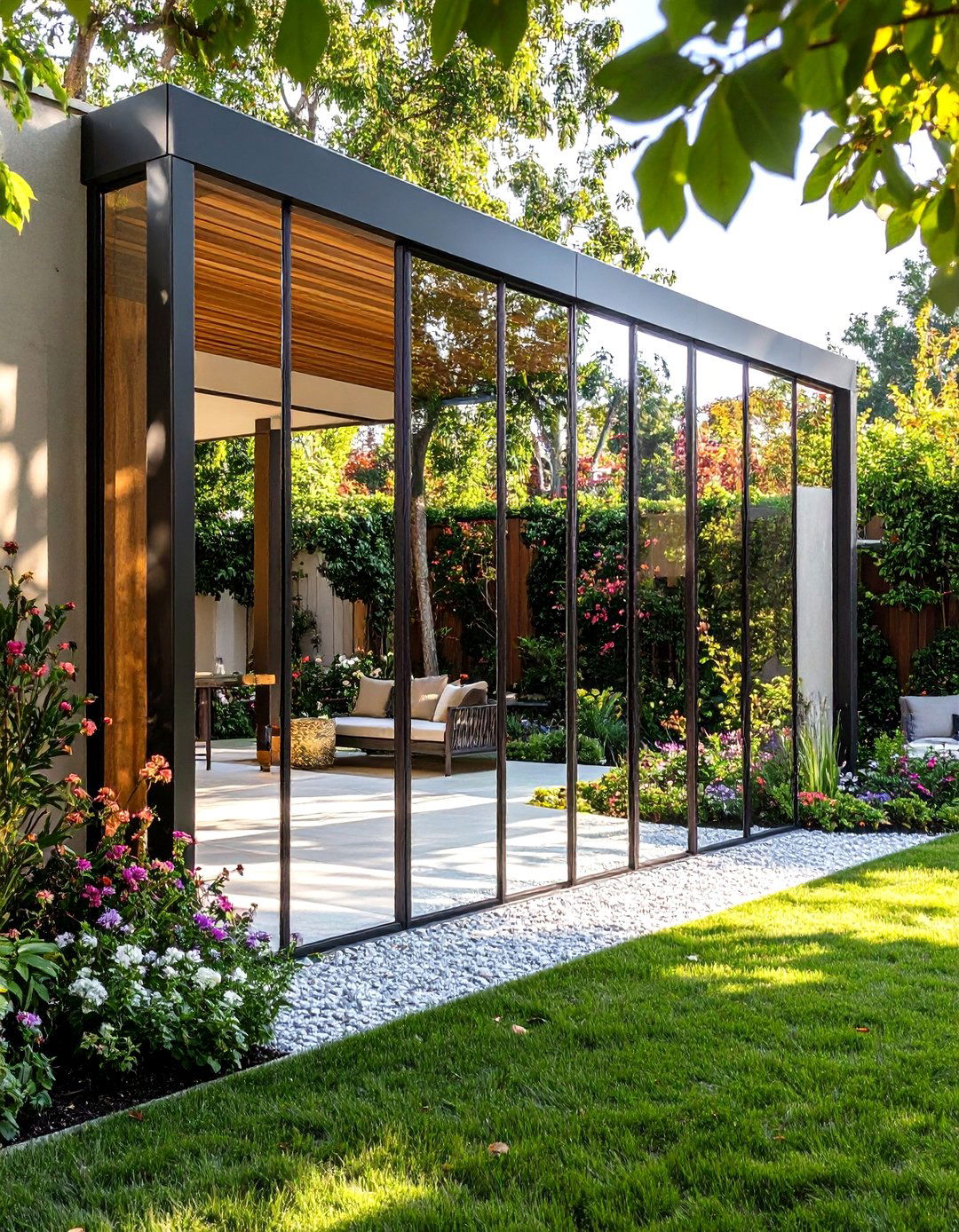
Mirror panels mounted on a back wall bounce light into shaded courtyards and visually extend depth, all while acting as an outdoor privacy screen by reflecting instead of revealing. Use shatter-resistant acrylic or frost-proof glass and angle slightly downward to avoid blinding glare. Frame mirrors with climbing ivy for a “secret window” illusion, and add drip irrigation to keep surrounding plants vibrant without water spots on the glass.
23. Retractable Side-Awning Privacy Screen
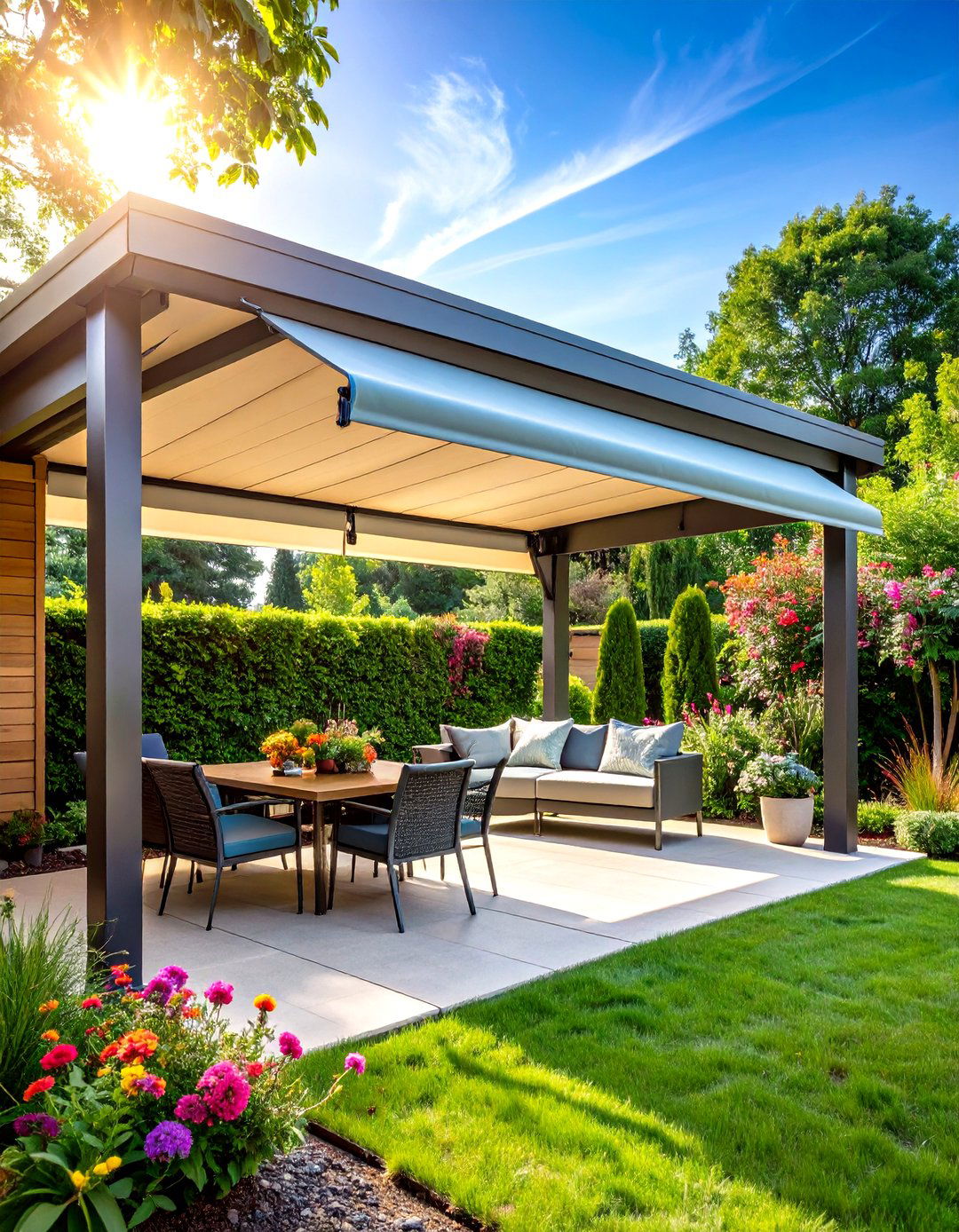
A retractable cassette awning unfurls a sturdy polyester panel up to 10 feet long, creating instant seclusion on patios, rooftop decks, or pool edges. Aluminum posts bolt to concrete or attach to deck joists; once locked open, the fabric withstands moderate wind and offers UPF-rated sun protection. When company leaves, just release the spring to roll it back into its slim housing. Regularly rinse off dust and close the awning during storms for a decade of service.
24. Outdoor Rug-Wrapped Frame Privacy Screen
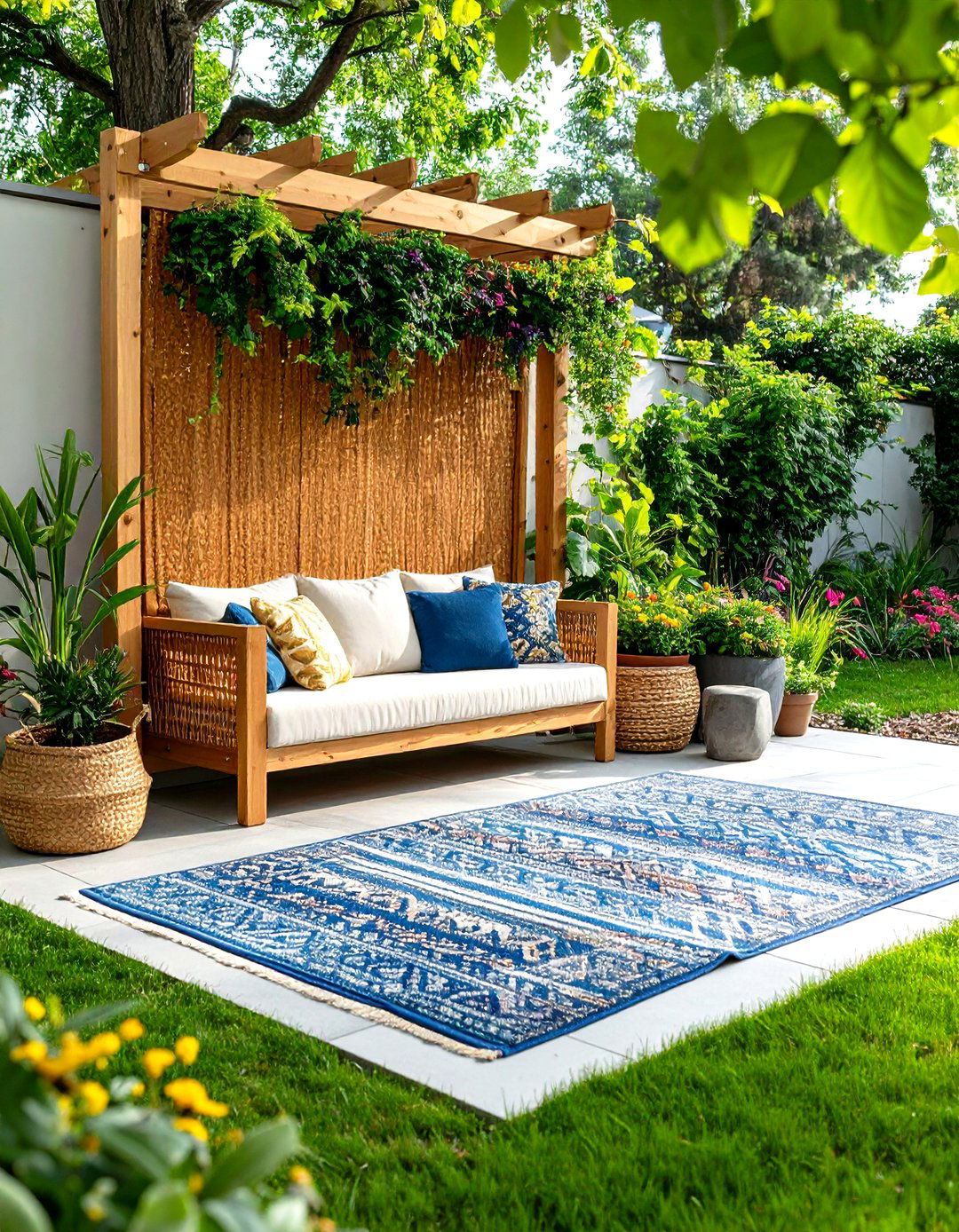
For renters needing a no-dig option, staple a weatherproof polypropylene outdoor rug around a simple 1×3 cedar frame. Bold patterns add color while the dense weave blocks views. Set the frame in heavy planter boxes or bolt to deck railings. Because rugs are designed to handle rain and UV rays, they resist fading far longer than indoor fabrics. The Spruce lists this among its budget DIY ideas, noting you can swap rugs seasonally for fresh style.
25. Evergreen Tree Row Living Privacy Screen
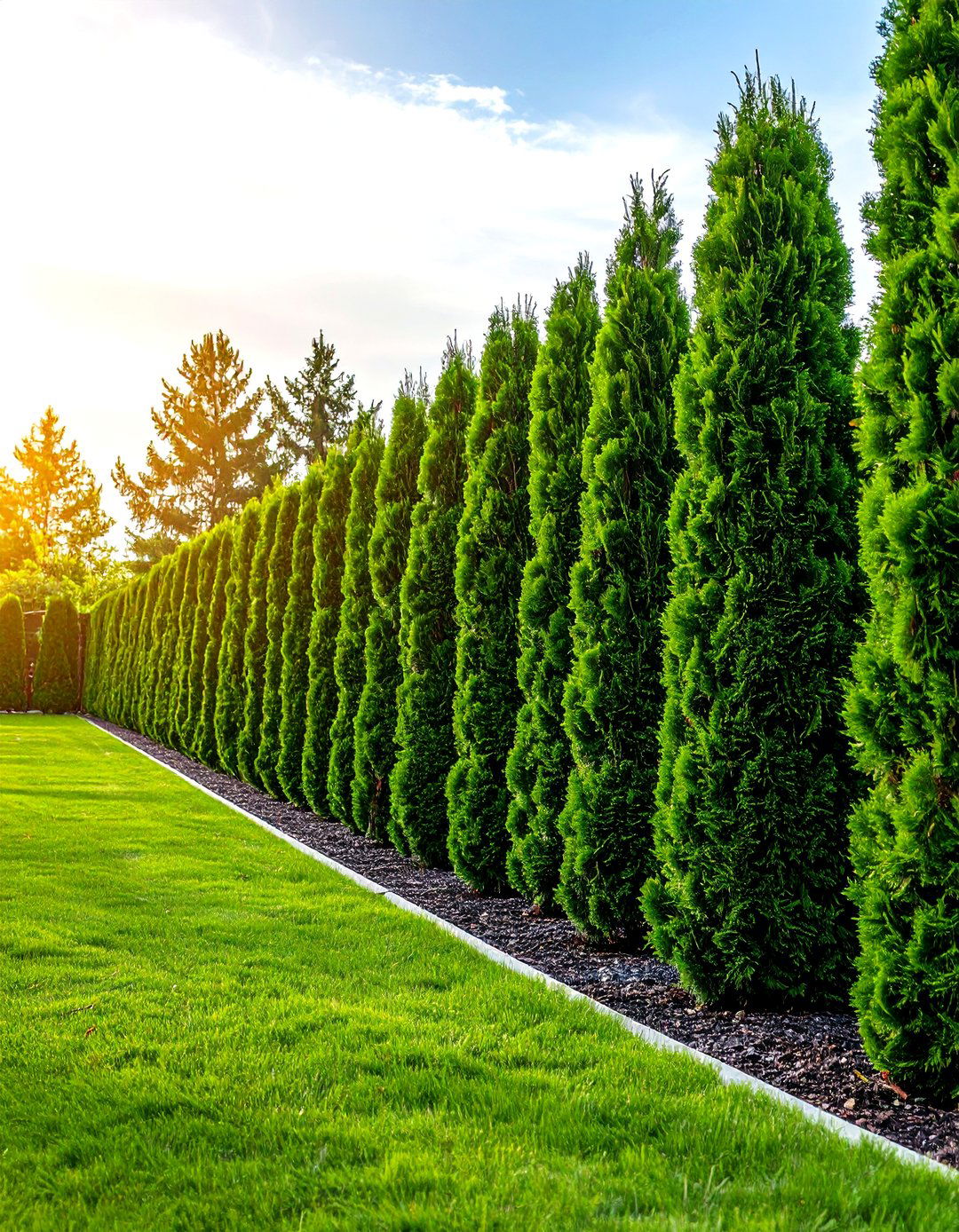
Finally, planting a staggered double row of columnar evergreens — think ‘Emerald Green’ arborvitae or Italian cypress — creates a permanent outdoor privacy screen that also dampens road noise. Space trees 3 – 4 feet apart so branches knit together in three years; add drip lines at planting to cut future watering chores. Mulch deeply to conserve moisture and suppress weeds. This living wall changes with the seasons, hosts birds, and increases property value long-term.
Conclusion:
Choosing an outdoor privacy screen is less about hiding and more about shaping how you experience your yard. From living walls that cool the air to retractable awnings that appear only when needed, every idea above balances function with style and can be tailored to your climate, budget, and DIY comfort level. Blend two or three approaches — perhaps bamboo panels behind a container hedge or string-lit trellis beneath a shade sail — to craft a layered, inviting refuge that feels unmistakably yours.



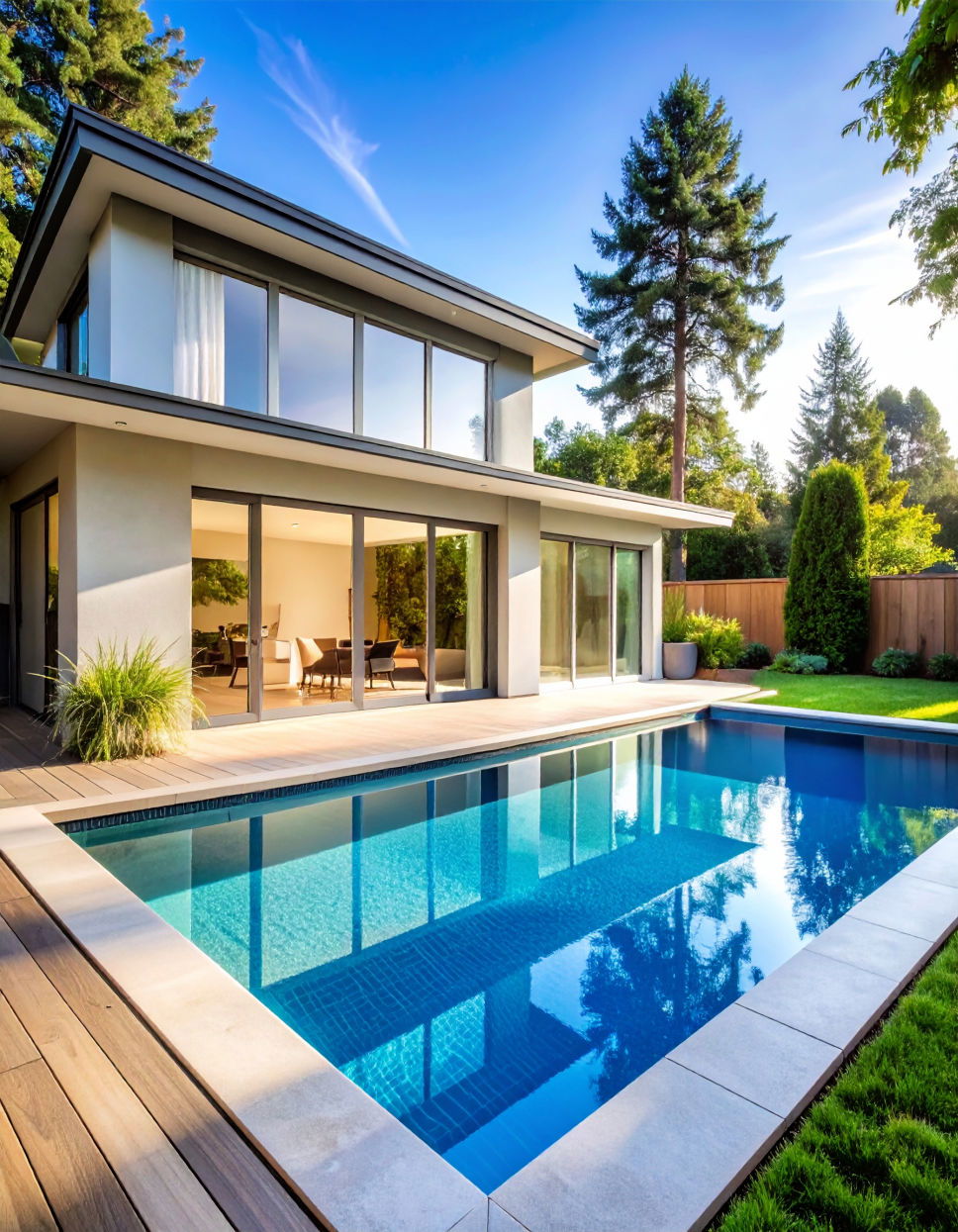
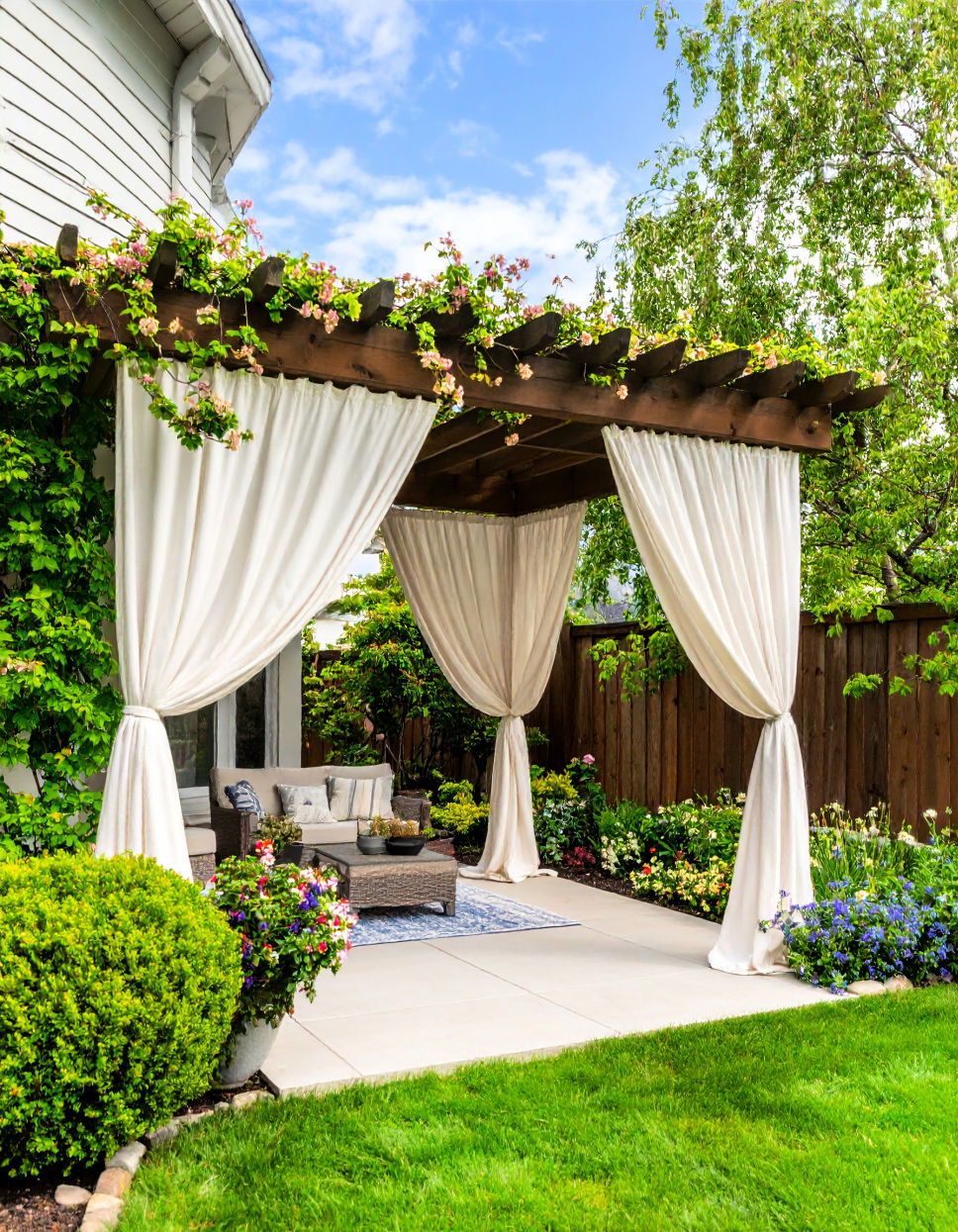

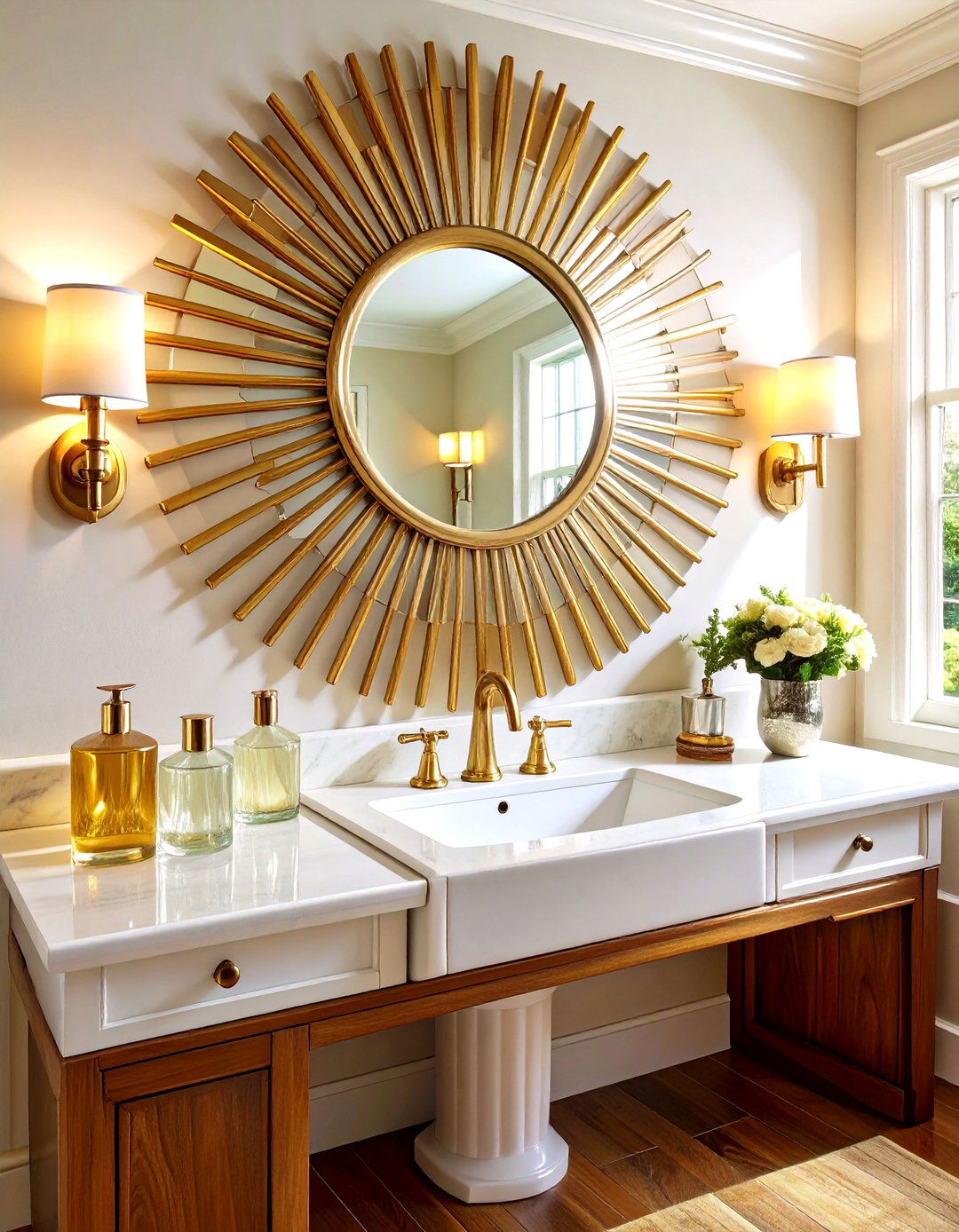
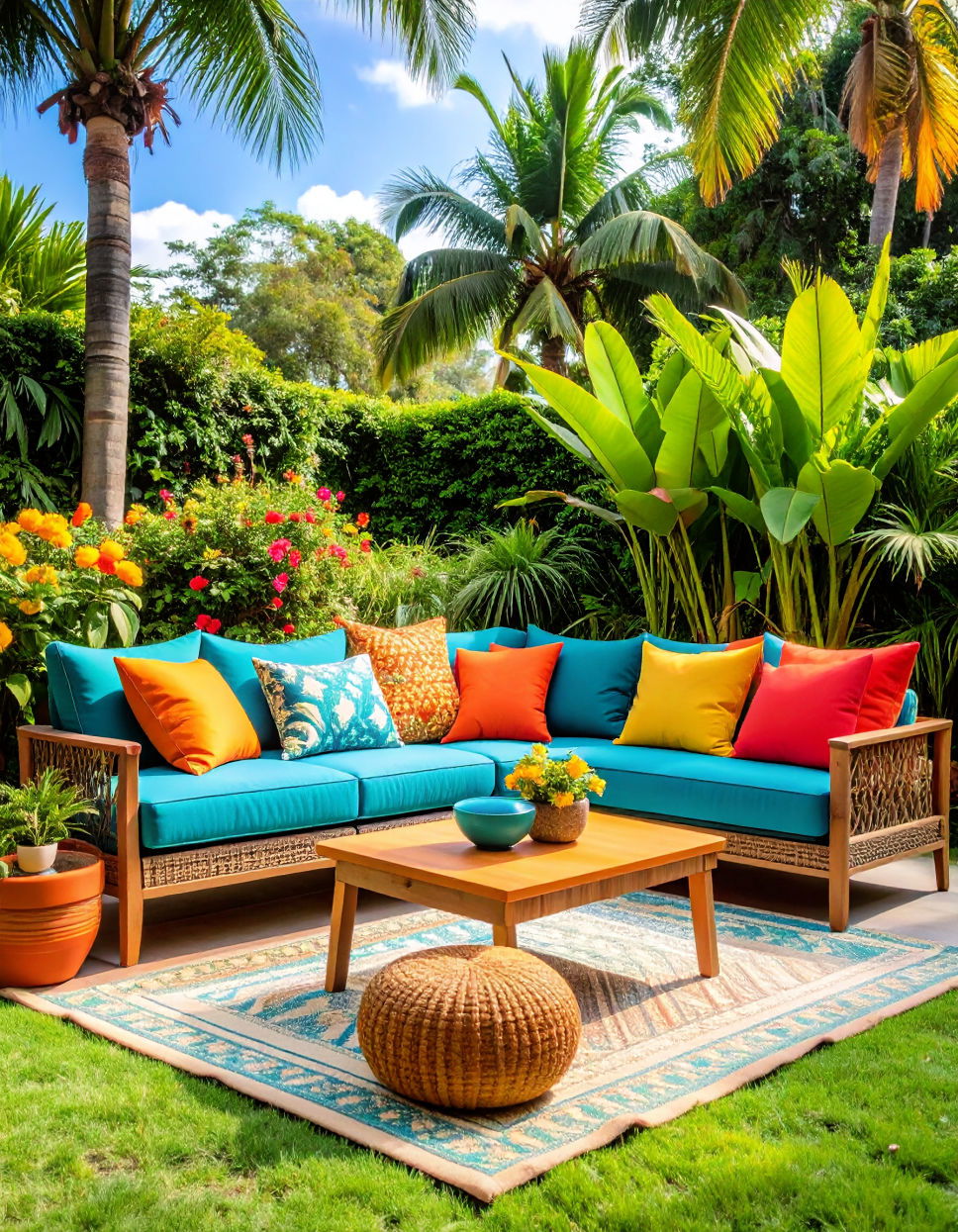
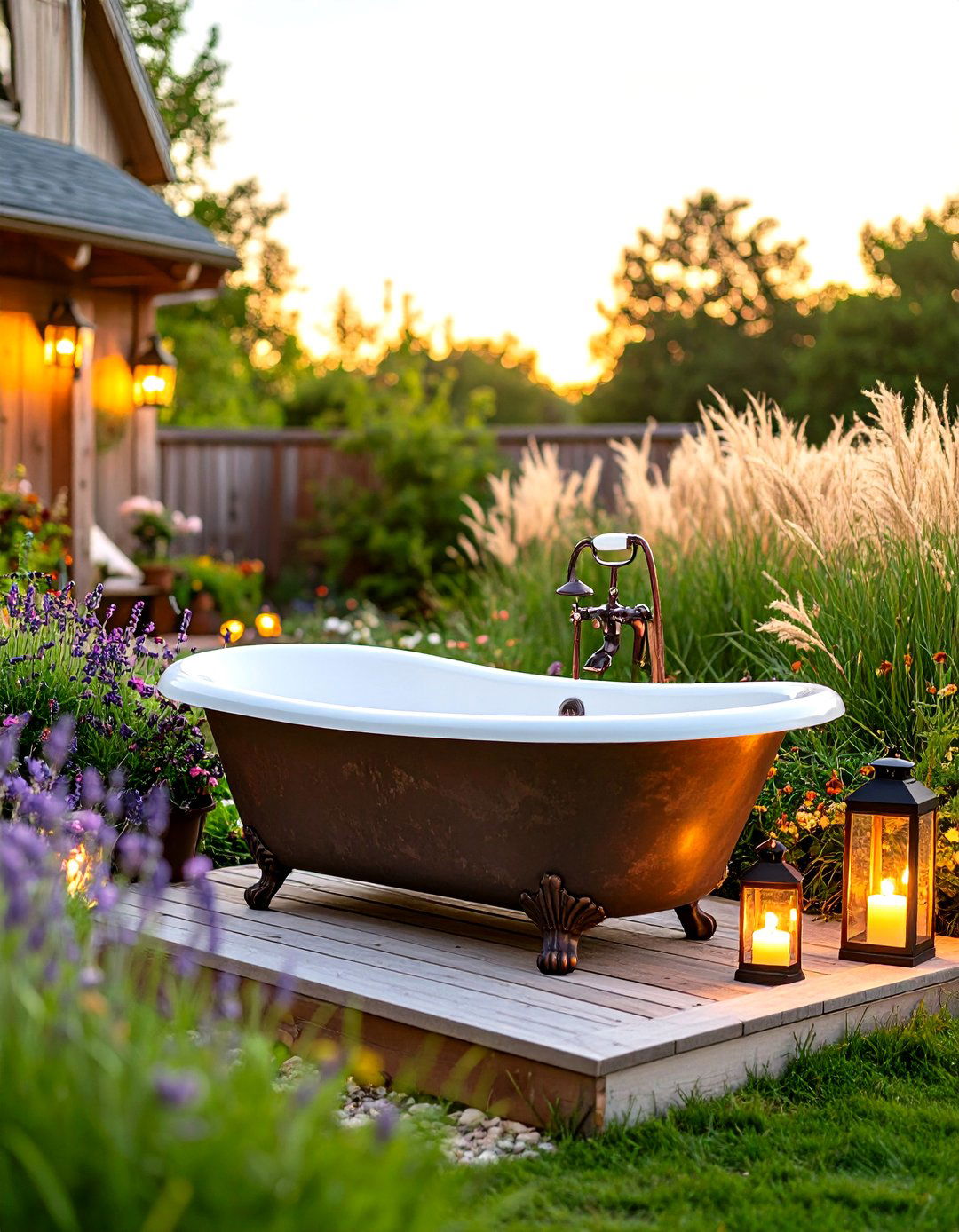
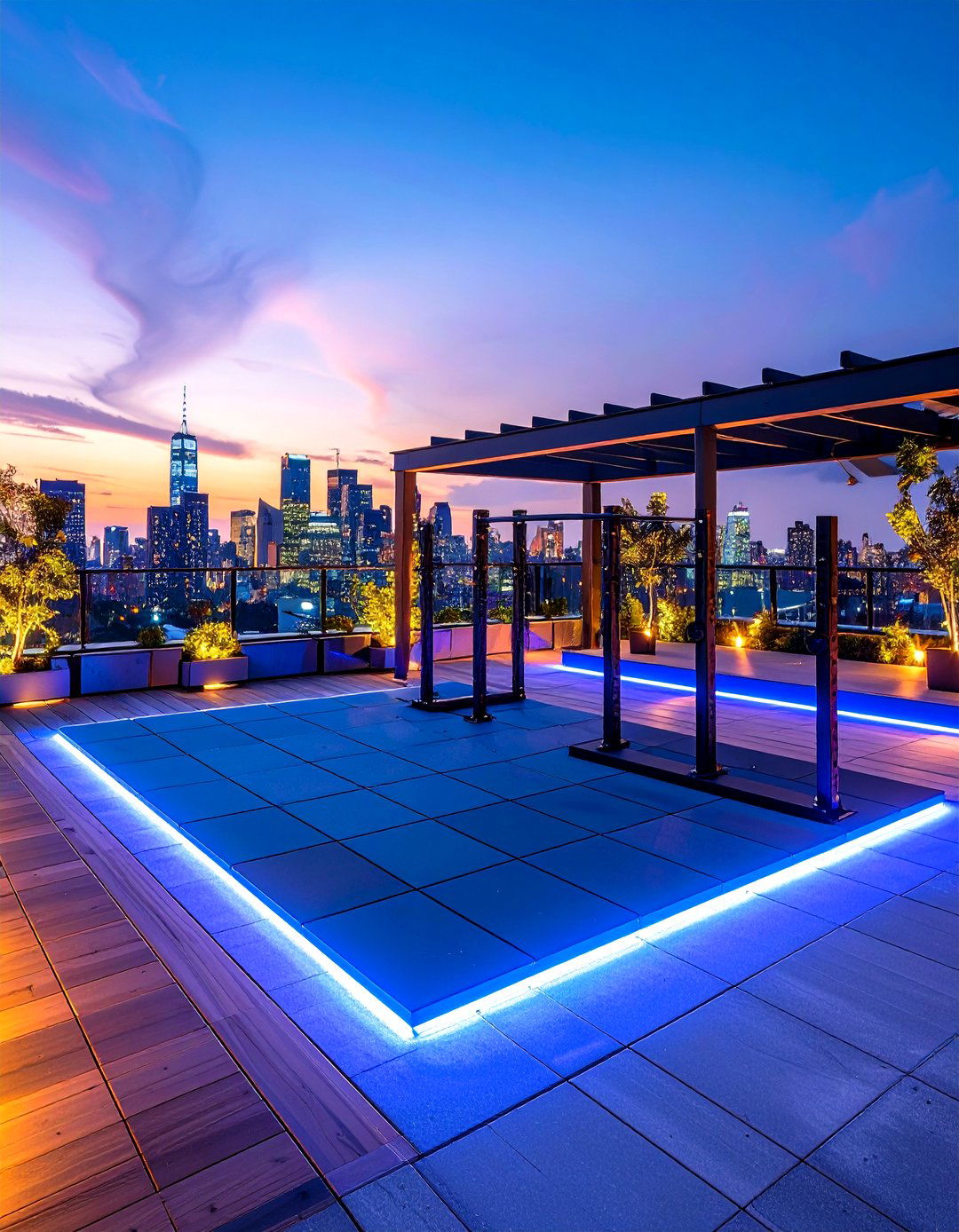

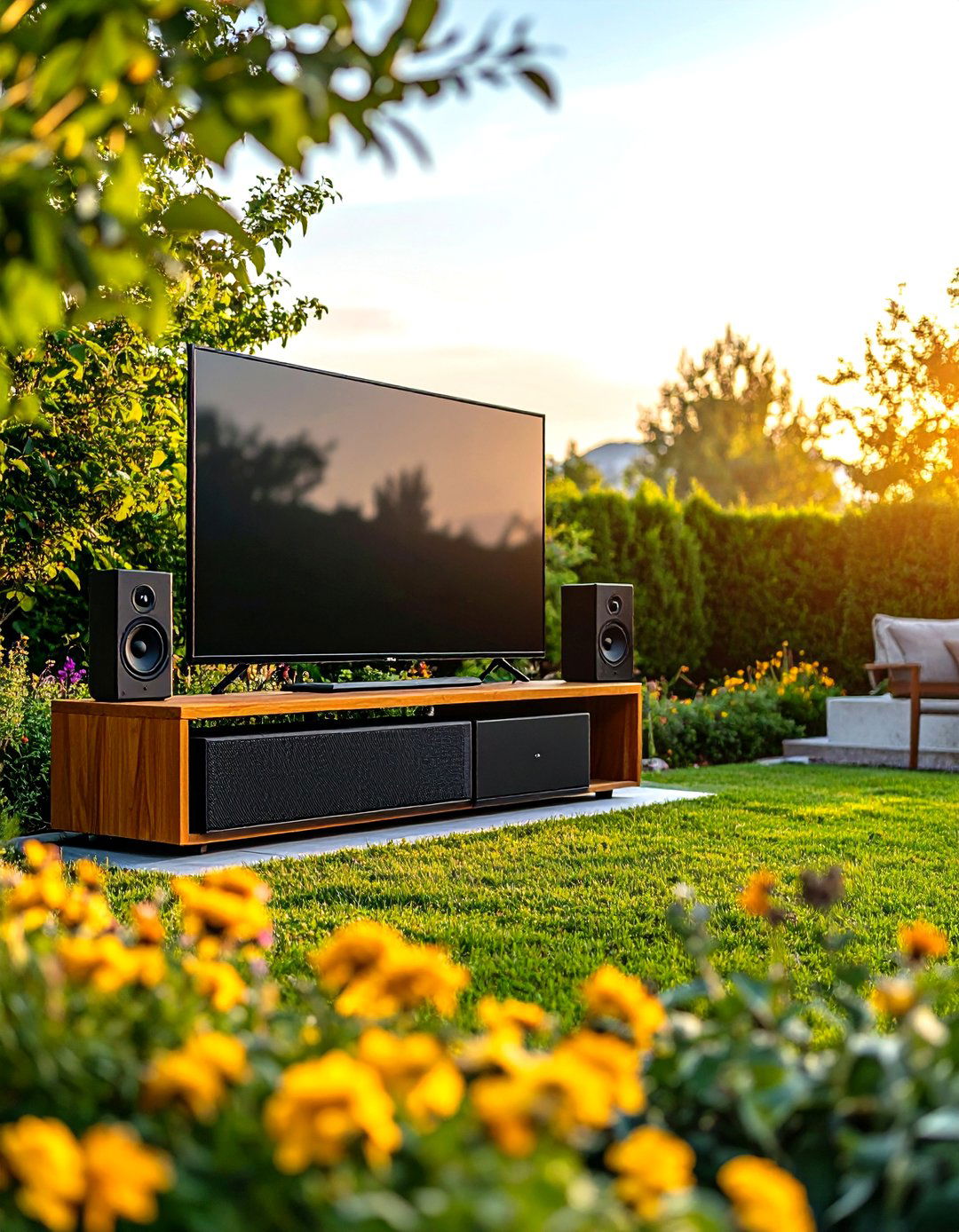

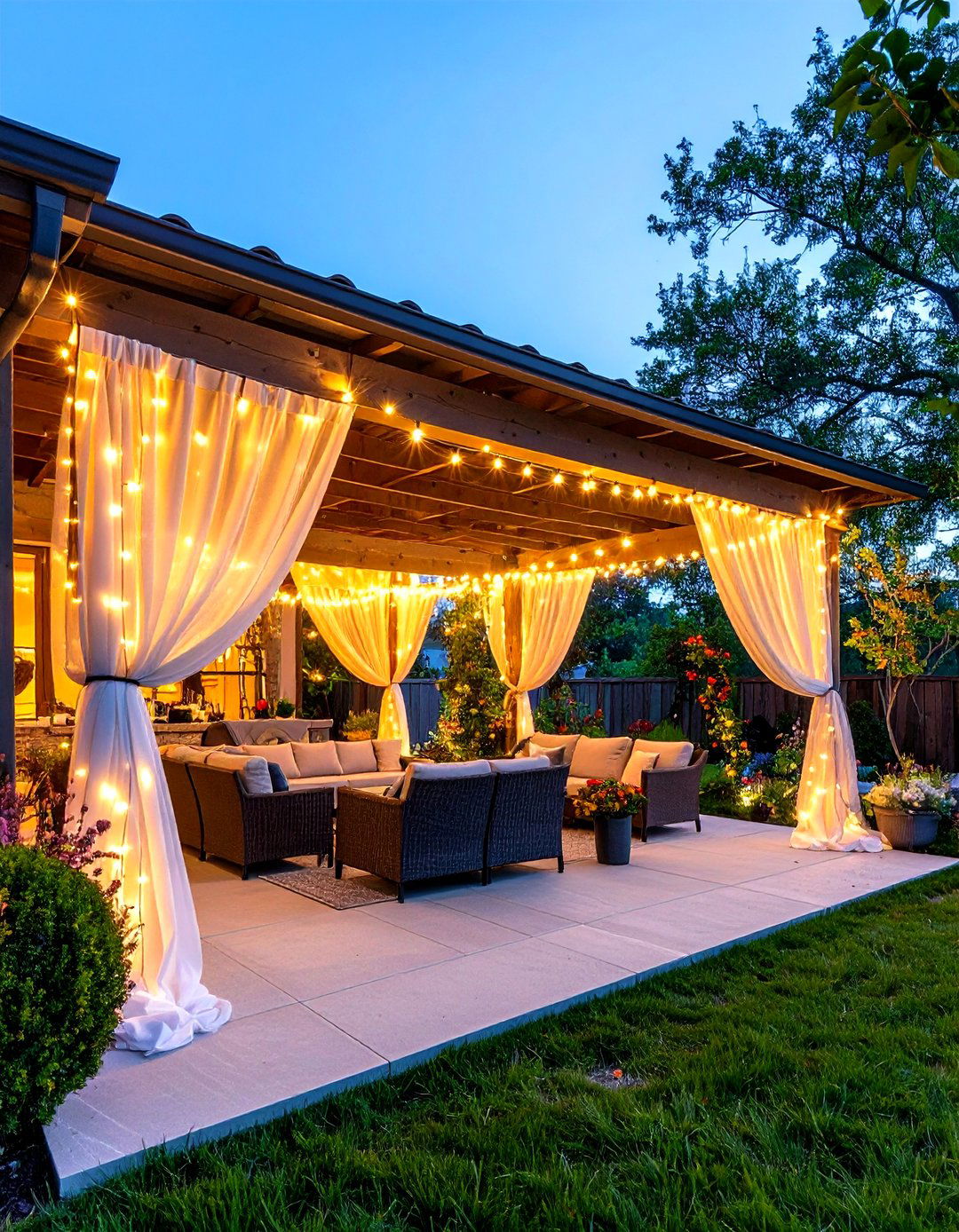
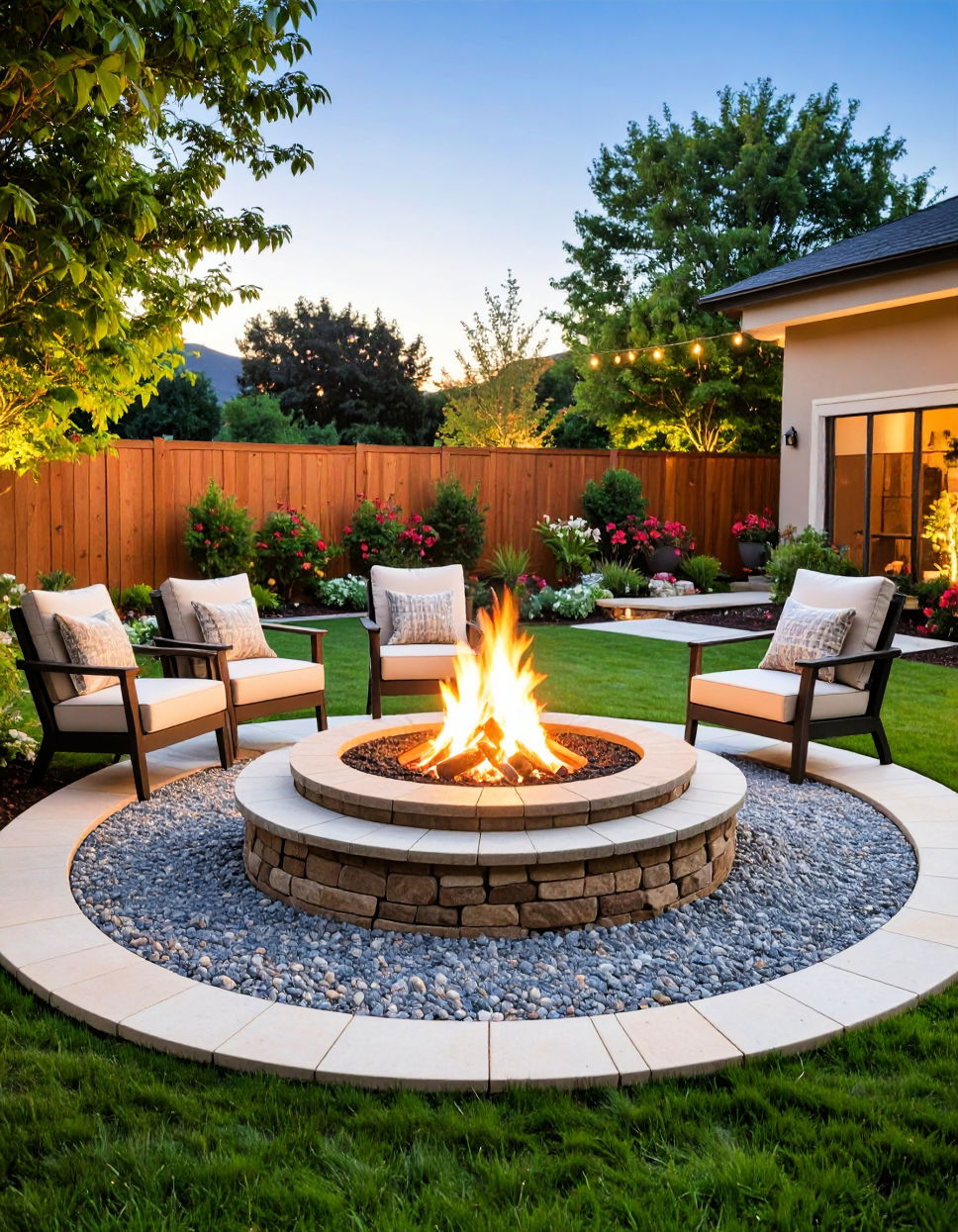

Leave a Reply